- Reviews / Why join our community?
- For companies
- Frequently asked questions

UX Research
What is ux research.
UX (user experience) research is the systematic study of target users and their requirements, to add realistic contexts and insights to design processes. UX researchers adopt various methods to uncover problems and design opportunities. Doing so, they reveal valuable information which can be fed into the design process.
See why UX research is a critical part of the UX design process.
- Transcript loading…
UX Research is about Finding Insights to Guide Successful Designs
When you do UX research, you’ll be better able to give users the best solutions—because you can discover exactly what they need. You can apply UX research at any stage of the design process. UX researchers often begin with qualitative measures, to determine users’ motivations and needs . Later, they might use quantitative measures to test their results . To do UX research well, you must take a structured approach when you gather data from your users. It’s vital to use methods that 1) are right for the purpose of your research and 2) will give you the clearest information. Then, you can interpret your findings so you can build valuable insights into your design .
“I get very uncomfortable when someone makes a design decision without customer contact.” – Dan Ritzenthaler, Senior Product Designer at HubSpot
We can divide UX research into two subsets:
Qualitative research – Using methods such as interviews and ethnographic field studies, you work to get an in-depth understanding of why users do what they do (e.g., why they missed a call to action, why they feel how they do about a website). For example, you can do user interviews with a small number of users and ask open-ended questions to get personal insights into their exercise habits. Another aspect of qualitative research is usability testing , to monitor (e.g.) users’ stress responses. You should do qualitative research carefully. As it involves collecting non-numerical data (e.g., opinions, motivations), there’s a risk that your personal opinions will influence findings.
Quantitative research – Using more-structured methods (e.g., surveys, analytics), you gather measurable data about what users do and test assumptions you drew from qualitative research. For example, you can give users an online survey to answer questions about their exercise habits (e.g., “How many hours do you work out per week?”). With this data, you can discover patterns among a large user group. If you have a large enough sample of representative test users, you’ll have a more statistically reliable way of assessing the population of target users. Whatever the method, with careful research design you can gather objective data that’s unbiased by your presence, personality or assumptions. However, quantitative data alone can’t reveal deeper human insights.
We can additionally divide UX research into two approaches:
Attitudinal – you listen to what users say—e.g., in interviews.
Behavioral – you see what users do through observational studies.
When you use a mix of both quantitative and qualitative research as well as a mix of attitudinal and behavioral approaches, you can usually get the clearest view of a design problem.
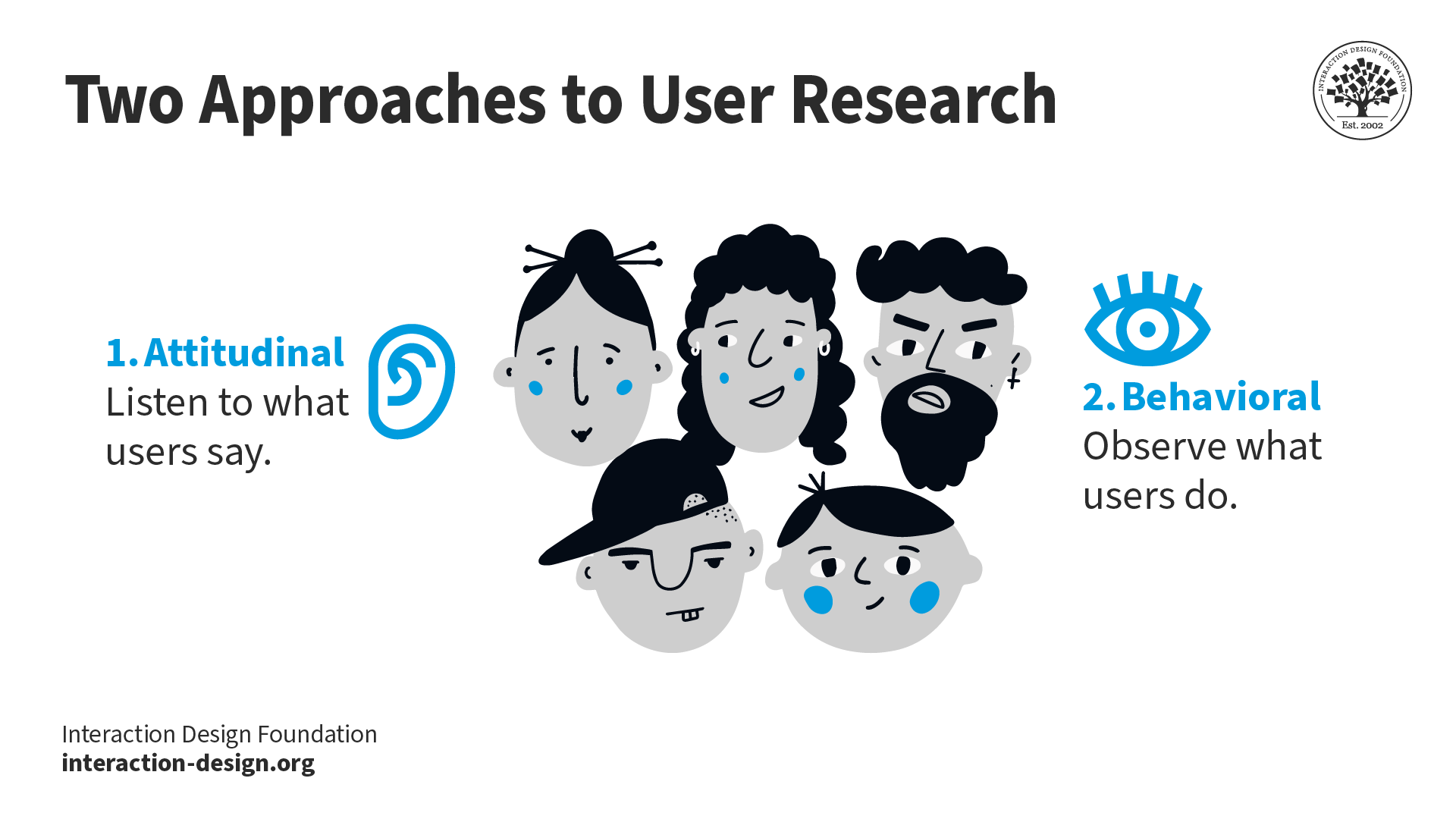
© Interaction Design Foundation, CC BY-SA 4.0
Use UX Research Methods throughout Development
The Nielsen Norman Group—an industry-leading UX consulting organization—identifies appropriate UX research methods which you can use during a project’s four stages . Key methods are:
Discover – Determine what is relevant for users.
Contextual inquiries – Interview suitable users in their own environment to see how they perform the task/s in question.
Diary studies – Have users record their daily interactions with a design or log their performance of activities.
Explore – Examine how to address all users’ needs.
Card sorting – Write words and phrases on cards; then let participants organize them in the most meaningful way and label categories to ensure that your design is structured in a logical way.
Customer journey maps – Create user journeys to expose potential pitfalls and crucial moments.
Test – Evaluate your designs.
Usability testing – Ensure your design is easy to use.
Accessibility evaluations – Test your design to ensure it’s accessible to everyone.
Listen – Put issues in perspective, find any new problems and notice trends.
Surveys/Questionnaires – Use these to track how users’ feel about your product.
Analytics – Collect analytics/metrics to chart (e.g.) website traffic and build reports.
- Copyright holder: Unsplash. Copyright terms and license: CCO Public Domain. Link: https://pixabay.com/en/clay-hands-sculpting-art-69...
- Copyright holder: Unsplash. Copyright terms and license: CCO Public Domain. Link: https://www.pexels.com/photo/man-in-black-shirt-an...
- Copyright holder: Indecent Proposer. Copyright terms and license: CC BY-NC 2.0 Link: https://www.flickr.com/photos/indecent_proposal/14...
- Copyright holder: Anna Langova. Copyright terms and license: CC0 1.0 Link: http://www.publicdomainpictures.net/view-image.php...
- Copyright holder: Conmongt. Copyright terms and license: CC0 Public Domain Link: https://pixabay.com/en/hourglass-time-time-lapse-clock-1623517/
Whichever UX research method you choose, you need to consider the pros and cons of the different techniques . For instance, card sorting is cheap and easy, but you may find it time-consuming when it comes to analysis. Also, it might not give you in-depth contextual meaning. Another constraint is your available resources , which will dictate when, how much and which type of UX research you can do. So, decide carefully on the most relevant method/s for your research . Moreover, involve stakeholders from your organization early on . They can reveal valuable UX insights and help keep your research in line with business goals. Remember, a design team values UX research as a way to validate its assumptions about users in the field , slash the cost of the best deliverables and keep products in high demand —ahead of competitors’.
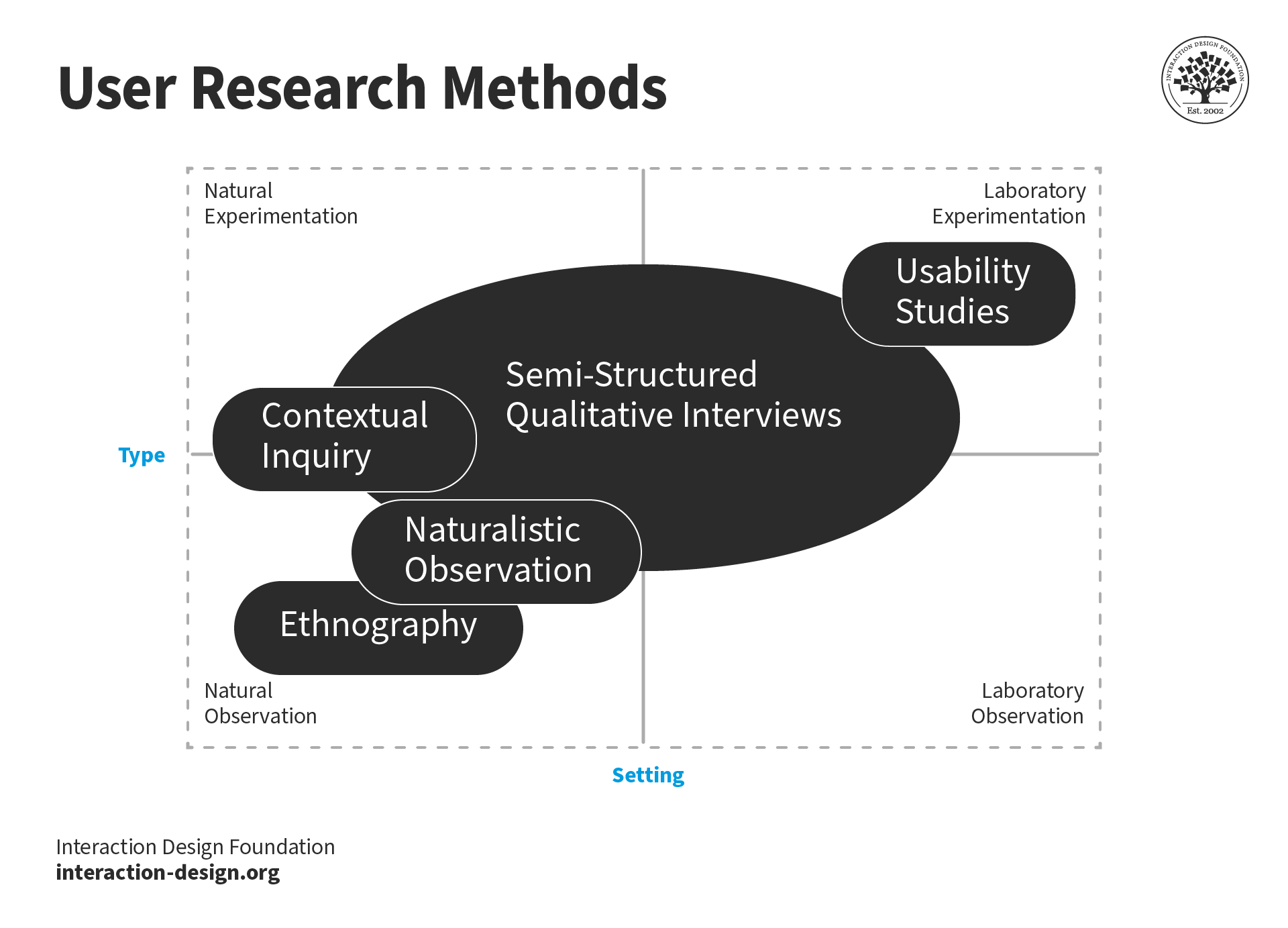
User research methods have different pros and cons,and vary from observations of users in context to controlled experiments in lab settings.
Learn More about UX Research
For a thorough grasp of UX research, take our course here: User Research – Methods and Best Practices
Read an extensive range of UX research considerations, discussed in Smashing Magazine: A Comprehensive Guide To UX Research
See the Nielsen Norman Group’s list of UX research tips: UX Research Cheat Sheet
Here’s a handy, example-rich catalog of UX research tools: 43 UX research tools for optimizing your product
Questions related to UX Research
UX research is a good career for those who enjoy working with a team and have strong communication skills. As a researcher, you play a crucial role in helping your team understand users and deliver valuable and delightful experiences. You will find a UX research career appealing if you enjoy scientific and creative pursuits.
Start exploring this career option; see the User Researcher Learning Path .
Studies suggest that companies are also willing to pay well for research roles. The average salary for a UX researcher ranges from $92,000 to $146,000 per year.
In smaller companies, user research may be one of the responsibilities of a generalist UX designer. How much can your salary vary based on your region? Find out in UI & UX Designer Salaries: How Much Can I Earn .
Research is one part of the overall UX design process. UX research helps inform the design strategy and decisions made at every step of the design process. In smaller teams, a generalist designer may end up conducting research.
A UX researcher aims to understand users and their needs. A UX designer seeks to create a product that meets those needs.
A UX researcher gathers information. A UX designer uses that information to create a user-friendly and visually appealing product.
Learn more about the relationship between UX research and UX design in the course:
User Experience: The Beginner’s Guide
If we consider a very broad definition of UX, then all user research is UX research.
However, in practice, there is a subtle difference between user research and UX research. While both involve understanding people, user research can involve users in any kind of research question, and some questions may not be that directly connected to user experience.
For example, you might do user research relating to a customer’s experience in relation to pricing, delivery or the experience across multiple channels.
Common UX research methods are usability testing, A/B testing, surveys, card sorting, user interviews, usage analytics and ethnographic research. Each method has its pros and cons and is useful in different scenarios. Hence, you must select the appropriate research method for the research question and target audience. Learn more about these methods in 7 Great, Tried and Tested UX Research Techniques .
Get started with user research. Download the User Research template bundle .
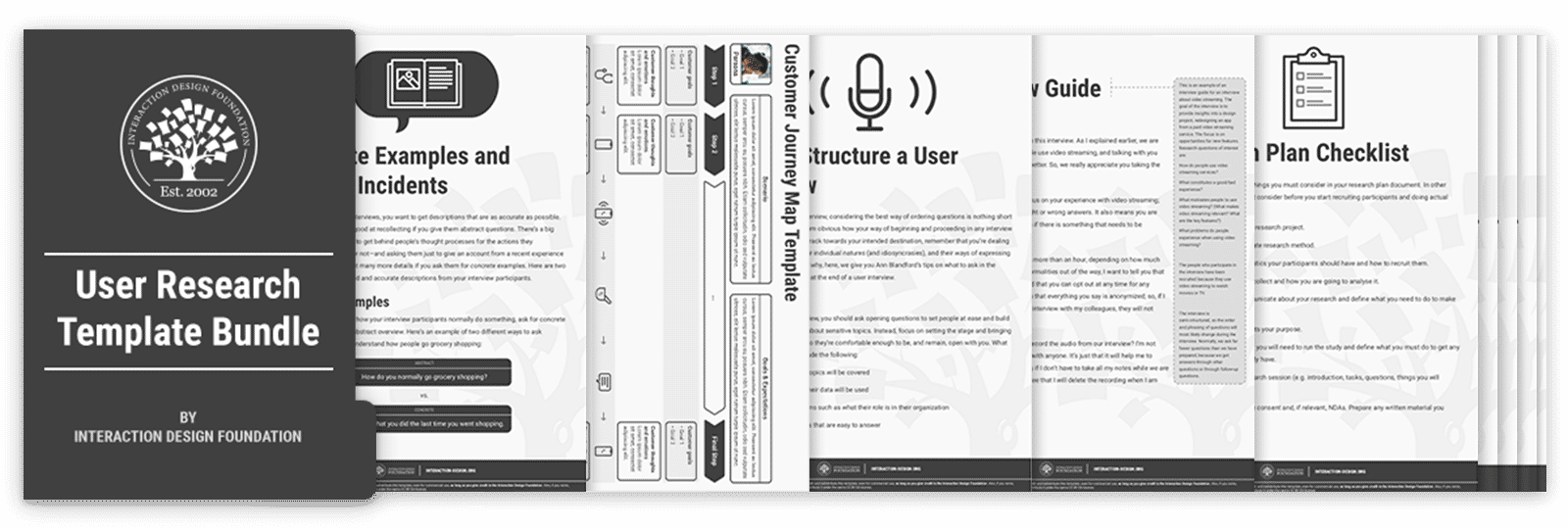
For a deep dive into usability testing—the most common research method, take the course Conducting Usability Testing .
Having a degree in a related field can give you an advantage. However, you don’t need a specific degree to become a UX researcher. A combination of relevant education, practical experience, and continuous learning can help you pursue a career in UX research. Many UX researchers come from diverse educational backgrounds, including psychology, statistics, human-computer interaction, information systems, design and anthropology.
Some employers may prefer candidates with at least a bachelor’s degree. However, it does not have to be in a UX-related field. There are relatively fewer degrees that focus solely on user research.
Data-Driven Design: Quantitative Research for UX
User Research – Methods and Best Practices
Every research project will vary. However, there are some common steps in conducting research, no matter which method or tool you decide to use:
Define the research question
Select the appropriate research method
Recruit participants
Conduct the research
Analyze the data
Present the findings
You can choose from various UX research tools . Your choice depends on your research question, how you're researching, the size of your organization, and your project. For instance:
Survey tools such as Typeform and Google Forms.
Card sorting tools such as Maze and UXtweak.
Heatmap tools such as HotJar and CrazyEgg
Usability testing (through first-click testing and tree-testing) tools such as Optimal Workshop and Loop 11
Diagramming applications such as Miro and Whimsical to analyze qualitative data through affinity diagramming.
Spreadsheet tools such as Google Sheets and Microsoft Excel for quantitative data analysis
Interface design and prototyping tools like Figma, Adobe XD, Sketch and Marvel to conduct usability testing.
Presentation tools such as Keynote, Google Slides and Microsoft PowerPoint.
Many of these tools offer additional features you can leverage for multiple purposes. To understand how you can make the most of these tools, we recommend these courses:
There are relatively fewer degrees that focus solely on user research.
While there are no universal research case study formats, here’s one suggested outline:
An overview of the project: Include the problem statement, goals and objectives.
The research methods and methodology: For example, surveys, interviews, or usability testing).
Research findings
The design process: How the research findings led to design decisions.
Impact of design decisions on users and the business: Include metrics such as conversion and error rates to demonstrate the impact.
Optionally, include notes on what you learned and how you can improve the process in the future.
Learn how to showcase your portfolio to wow your future employer/client in the How to Create a UX Portfolio course.
While AI can help automate tasks and help UX researchers, it will not completely replace them. AI lacks the creativity and empathy that human designers bring to the table.
Human researchers are better at understanding the nuances of human behavior and emotions. They can also think outside the box and develop creative solutions that AI cannot. So, AI can help researchers be more efficient and effective through data analysis, smart suggestions and automation. But it cannot replace them.
Watch AI-Powered UX Design: How to Elevate Your UX Career to learn how you can work with AI.
Agile teams often struggle to incorporate user research in their workflows due to the time pressure of short sprints. However, that doesn’t mean agile teams can’t conduct research. Instead of seeing research as one big project, teams can break it into bite-sized chunks. Researchers regularly conduct research and share their findings in every sprint.
Researchers can involve engineers and other stakeholders in decision-making to give everyone the context they need to make better decisions. When engineers participate in the decision-making process, they can ensure that the design will be technically feasible. There will also be lower chances of errors when the team actually builds the feature. Here’s more on how to make research a team effort .
For more on bite-sized research, see this Master Class: Continuous Product Discovery: The What and Why
For more practical tips and methods to work in an agile environment, take our Agile Methods for UX Design course.
User research is very important in designing products people will want and use. It helps us avoid designing based on what we think instead of what users actually want.
UX research helps designers understand their users’ needs, behaviors, attitudes and how they interact with a product or service. Research helps identify usability problems, gather feedback on design concepts, and validate design decisions. This ultimately benefits businesses by improving the product, brand reputation and loyalty. A good user experience provides a competitive edge and reduces the risk of product failure.
Learn more about the importance of user research in the design process in these courses:
Design Thinking: The Ultimate Guide
Answer a Short Quiz to Earn a Gift
What is the primary purpose of UX research in design processes?
- To ensure the product is visually appealing.
- To reduce the cost of marketing the product.
- To understand user needs and enhance design decisions.
Which type of UX research do designers use to collect non-numerical data such as opinions and motivations?
- Behavioral research
- Qualitative research
- Quantitative research
Which UX research method involves users sorting terms into categories to help structure design logically?
- Card sorting
- Information architecture
- Usability testing
What is a potential drawback of using card sorting in UX research?
- It can be expensive and requires special software.
- It may not provide deep contextual insights.
- It only works for digital products.
How does UX research primarily benefit a design team in a business context?
- It focuses exclusively on the aesthetic aspects of product design.
- It reduces dependency on technology.
- It validates design assumptions and keeps products competitive.
Better luck next time!
Do you want to improve your UX / UI Design skills? Join us now
Congratulations! You did amazing
You earned your gift with a perfect score! Let us send it to you.
Check Your Inbox
We’ve emailed your gift to [email protected] .
Literature on UX Research
Here’s the entire UX literature on UX Research by the Interaction Design Foundation, collated in one place:
Learn more about UX Research
Take a deep dive into UX Research with our course User Research – Methods and Best Practices .
How do you plan to design a product or service that your users will love , if you don't know what they want in the first place? As a user experience designer, you shouldn't leave it to chance to design something outstanding; you should make the effort to understand your users and build on that knowledge from the outset. User research is the way to do this, and it can therefore be thought of as the largest part of user experience design .
In fact, user research is often the first step of a UX design process—after all, you cannot begin to design a product or service without first understanding what your users want! As you gain the skills required, and learn about the best practices in user research, you’ll get first-hand knowledge of your users and be able to design the optimal product—one that’s truly relevant for your users and, subsequently, outperforms your competitors’ .
This course will give you insights into the most essential qualitative research methods around and will teach you how to put them into practice in your design work. You’ll also have the opportunity to embark on three practical projects where you can apply what you’ve learned to carry out user research in the real world . You’ll learn details about how to plan user research projects and fit them into your own work processes in a way that maximizes the impact your research can have on your designs. On top of that, you’ll gain practice with different methods that will help you analyze the results of your research and communicate your findings to your clients and stakeholders—workshops, user journeys and personas, just to name a few!
By the end of the course, you’ll have not only a Course Certificate but also three case studies to add to your portfolio. And remember, a portfolio with engaging case studies is invaluable if you are looking to break into a career in UX design or user research!
We believe you should learn from the best, so we’ve gathered a team of experts to help teach this course alongside our own course instructors. That means you’ll meet a new instructor in each of the lessons on research methods who is an expert in their field—we hope you enjoy what they have in store for you!
All open-source articles on UX Research
7 great, tried and tested ux research techniques.

- 1.2k shares
- 3 years ago
The Ultimate Guide to Understanding UX Roles and Which One You Should Go For

Shadowing in User Research - Do You See What They See?
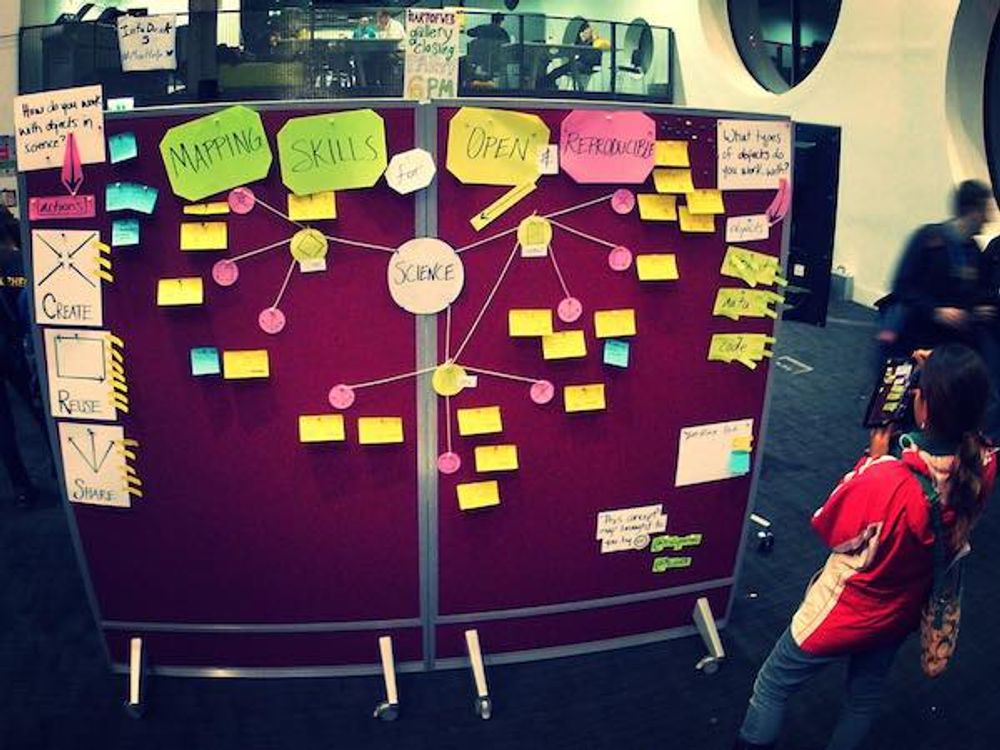
Contextual Interviews and How to Handle Them

15 Guiding Principles for UX Researchers

Ethnography

Porter’s 5 Forces Model - Design in Context, Understand the Market

- 7 years ago
Ideas for Conducting UX Research with Children

Laddering Questions Drilling Down Deep and Moving Sideways in UX Research

Action Research
4 common pitfalls in usability testing and how to avoid them to get more honest feedback.

- 2 years ago
Confirmation Bias – It’s Not What We Think We Know That Counts

User Research Methods for Mobile UX

- 11 mths ago
The Top UX Design Books You Need to Read in 2024: Beginner to Expert
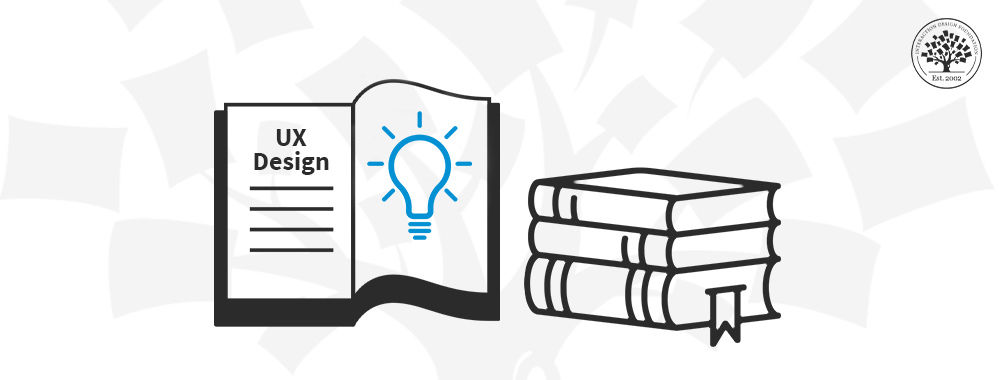
6 Tips for Better International UX Research

Collaborating with Your Team for Research
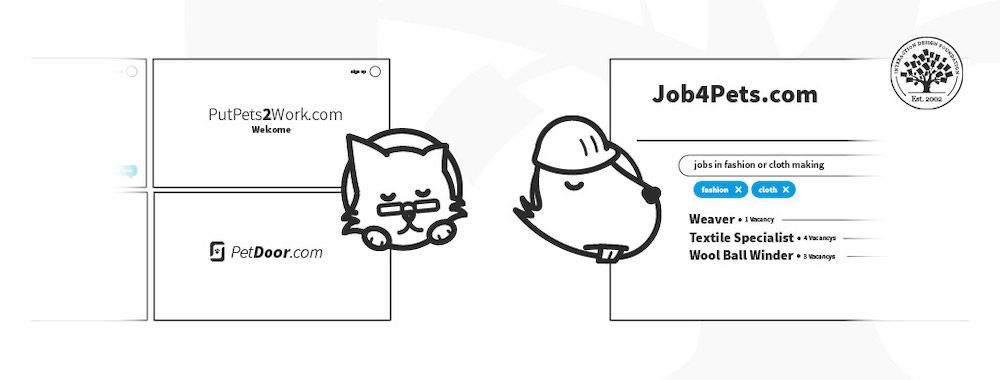
- 2 weeks ago
Adding Quality to Your Design Research with an SSQS Checklist

- 8 years ago
Common UX Research Interview Questions

How to Fit Quantitative Research into the Project Lifecycle

The Best Free UX Design Courses in 2024
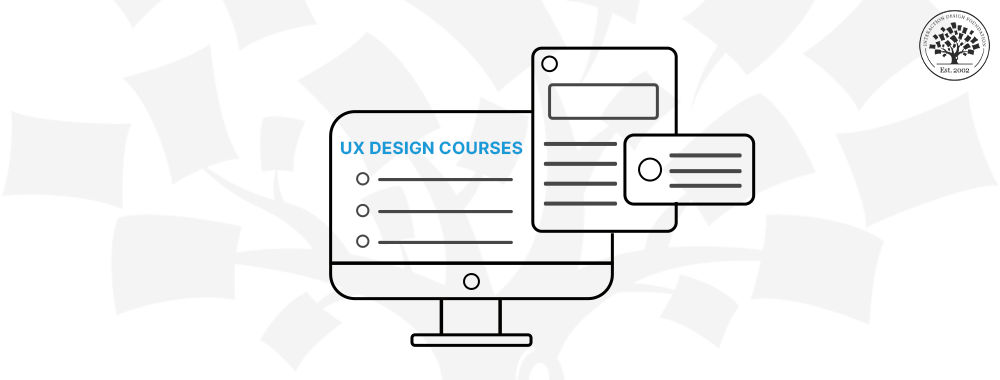
Open Access—Link to us!
We believe in Open Access and the democratization of knowledge . Unfortunately, world-class educational materials such as this page are normally hidden behind paywalls or in expensive textbooks.
If you want this to change , cite this page , link to us, or join us to help us democratize design knowledge !
Privacy Settings
Our digital services use necessary tracking technologies, including third-party cookies, for security, functionality, and to uphold user rights. Optional cookies offer enhanced features, and analytics.
Experience the full potential of our site that remembers your preferences and supports secure sign-in.
Governs the storage of data necessary for maintaining website security, user authentication, and fraud prevention mechanisms.
Enhanced Functionality
Saves your settings and preferences, like your location, for a more personalized experience.
Referral Program
We use cookies to enable our referral program, giving you and your friends discounts.
Error Reporting
We share user ID with Bugsnag and NewRelic to help us track errors and fix issues.
Optimize your experience by allowing us to monitor site usage. You’ll enjoy a smoother, more personalized journey without compromising your privacy.
Analytics Storage
Collects anonymous data on how you navigate and interact, helping us make informed improvements.
Differentiates real visitors from automated bots, ensuring accurate usage data and improving your website experience.
Lets us tailor your digital ads to match your interests, making them more relevant and useful to you.
Advertising Storage
Stores information for better-targeted advertising, enhancing your online ad experience.
Personalization Storage
Permits storing data to personalize content and ads across Google services based on user behavior, enhancing overall user experience.
Advertising Personalization
Allows for content and ad personalization across Google services based on user behavior. This consent enhances user experiences.
Enables personalizing ads based on user data and interactions, allowing for more relevant advertising experiences across Google services.
Receive more relevant advertisements by sharing your interests and behavior with our trusted advertising partners.
Enables better ad targeting and measurement on Meta platforms, making ads you see more relevant.
Allows for improved ad effectiveness and measurement through Meta’s Conversions API, ensuring privacy-compliant data sharing.
LinkedIn Insights
Tracks conversions, retargeting, and web analytics for LinkedIn ad campaigns, enhancing ad relevance and performance.
LinkedIn CAPI
Enhances LinkedIn advertising through server-side event tracking, offering more accurate measurement and personalization.
Google Ads Tag
Tracks ad performance and user engagement, helping deliver ads that are most useful to you.
Share Knowledge, Get Respect!
or copy link
Cite according to academic standards
Simply copy and paste the text below into your bibliographic reference list, onto your blog, or anywhere else. You can also just hyperlink to this page.
New to UX Design? We’re Giving You a Free ebook!

Download our free ebook The Basics of User Experience Design to learn about core concepts of UX design.
In 9 chapters, we’ll cover: conducting user interviews, design thinking, interaction design, mobile UX design, usability, UX research, and many more!
Root out friction in every digital experience, super-charge conversion rates, and optimize digital self-service
Uncover insights from any interaction, deliver AI-powered agent coaching, and reduce cost to serve
Increase revenue and loyalty with real-time insights and recommendations delivered to teams on the ground
Know how your people feel and empower managers to improve employee engagement, productivity, and retention
Take action in the moments that matter most along the employee journey and drive bottom line growth
Whatever they’re are saying, wherever they’re saying it, know exactly what’s going on with your people
Get faster, richer insights with qual and quant tools that make powerful market research available to everyone
Run concept tests, pricing studies, prototyping + more with fast, powerful studies designed by UX research experts
Track your brand performance 24/7 and act quickly to respond to opportunities and challenges in your market
Explore the platform powering Experience Management
- Free Account
- For Digital
- For Customer Care
- For Human Resources
- For Researchers
- Financial Services
- All Industries
Popular Use Cases
- Customer Experience
- Employee Experience
- Net Promoter Score
- Voice of Customer
- Customer Success Hub
- Product Documentation
- Training & Certification
- XM Institute
- Popular Resources
- Customer Stories
- Artificial Intelligence
- Market Research
- Partnerships
- Marketplace
The annual gathering of the experience leaders at the world’s iconic brands building breakthrough business results, live in Salt Lake City.
- English/AU & NZ
- Español/Europa
- Español/América Latina
- Português Brasileiro
- REQUEST DEMO
- Experience Management
User Experience
- User Experience Research
See how XM for Customer Frontlines works
User experience (ux) research: definition and methodology.
17 min read To build outstanding products and services for your customers, you need a thorough understanding of who they are, what they need and where their pain points and priorities lie. UX research helps you fully step into your customers’ shoes.
What do we mean by user experience?
User experience (UX) is a customer’s-eye view of your business as it relates to completing tasks and using interactive platforms and services.
It’s closely tied to the idea of customer experience (CX) , but rather than being a holistic view of your brand, it’s more focused on utility and usability testing – the hands-on side of things. You can think of UX as a sub-discipline of CX .
For example, CX research might consider how customers perceive a company’s customer service levels and how confident they feel in having their issues resolved. Meanwhile, UX research would focus on how successfully those customers navigate a self-service website, whether the language on that site is clear and how easy it is to use.
Free eBook: The essential website experience & UX playbook
What is user experience (UX) research?
User experience (UX) research is about diving deep into how customers interact with your brand on a practical, functional level, and observing how easily they can complete their tasks and meet their goals.
User research is the process of discovering the behaviors , motivations, and needs of your customers through observation, task analysis, and other types of user feedback . It can involve working directly with members of your target audience through UX testing sessions, remote session observation using digital tools, surveys to collect user feedback, and many more UX research methods and techniques.
Why is UX research important?
So what exactly is the value of user experience research? After all, you understand your business and its workings better than anyone. How can uninformed external users help you learn more?
The fresh perspective of your end-users is exactly why UX research is so valuable. Because they’re not already immersed in your language, processes, and systems, user testing participants are in the best position to help you see where things might be confusing to a newcomer who isn’t involved with your business.
Better yet, they can show you where confusion or frustration might lead a new or potential customer to miss out on product benefits, fail to convert, or even give up and look toward your competitors instead.
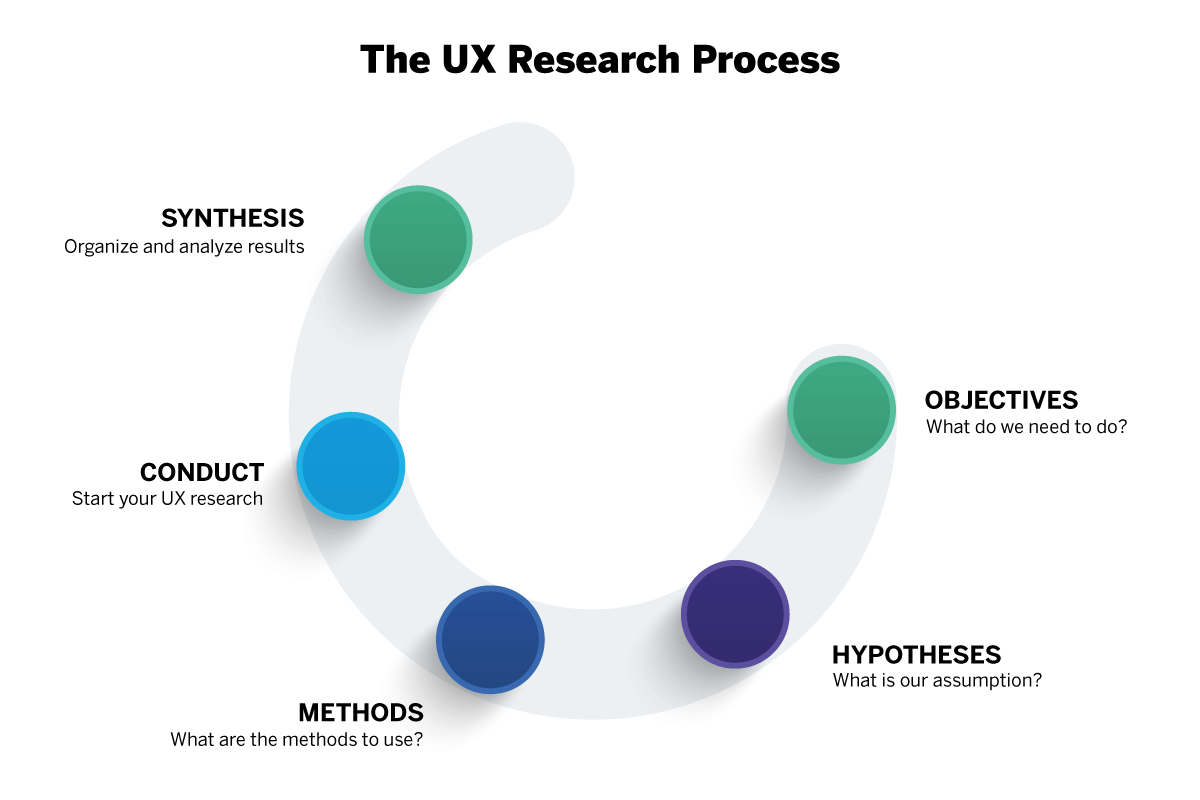
In areas like new product design and development , user research allows you to head off potential issues with products and services before they even hit the shelves. You can design the product correctly the first time, instead of having to fix it later when customers are unhappy.
Simply put, UX research is critical because it keeps you from wasting time, money, and effort designing the wrong product or solution. It’s valuable for all areas of your business and yields clear benefits for your product, your users, and your bottom line.
- Product benefits By asking your customers for direct feedback about a potential product, you can discover how and when customers prefer to use a product, what pain points your product will solve, and how to improve your product design .
- User benefits UX research is unbiased feedback, straight from the most valuable source: your customers. Because this type of research is not biased by investors, company leaders, or outside influences, it is the best resource for getting actionable product feedback.
- Business benefits Knowing what your users value helps you spend less time and money fixing flawed designs, speeds up the product development process , and increases customer satisfaction.
UX research helps brands and organizations to:
- Understand how users experience products, websites, mobile apps, and prototypes
- Evaluate and optimize prototypes and ideas based on UX research discoveries – and nail the design and experience early in a product’s life cycle
- Unearth new customer needs and business opportunities
- Find and fix hidden problems with products and services that arise in real-world use cases
- Make informed decisions through the product development process by testing various aspects of product designs
- Provide user experiences that outperform other businesses in your sector ( UX competitor research )
- Understand each user interaction across complete customer journeys
- Build a richer, more useful picture of your target audiences for better marketing and advertising
What’s the ROI of performing UX research?
The ROI of UX research is tricky to pin down because there often isn’t a direct, easy-to-spot correlation between time spent on it and resulting revenue. UX research can and does drive revenue, but it more directly influences metrics that show customer satisfaction, customer retention, and behavioral goals like user signups.
A simple way to draw a straight (if basic) line between UX research and its associated ROI is to calculate your conversion rate, where ‘conversion’ simply means completing the action you had in mind:
Number of people who took your desired action
————————————————————— x 100
Total visitors/users
That percentage can be calculated and revisited over time to see how UX changes resulting from your research are having an effect.
Generally, when we talk about ROI, we’re talking about the highest possible rates of return you can attribute to an investment. But – while PWC research suggests that ROI on UX research can rise to as high as 301% – it’s better not to get caught up in absolutes with operational data like revenue.
Instead, it’s worth thinking more about the benefits that come out of tracking human behavior associated with improving your UX in general.
For example, IBM research states that 3 out of 5 users think that a positive user experience is more influential than strong advertising, while Forrester Research estimates that as many as 50% of potential sales fall through because users can’t find the information they need.
Thorough UX research can also cut a project’s development time by up to 50% .
Ultimately, when trying to track the ROI of your time spent doing quantitative and qualitative research on UX, you want to look at behavior and sentiment. If your main goal is website use, you should notice a decline in bounce rate as a sign of positive ROI. If you sell services, run regular CSAT surveys to determine how satisfied customers are with everything.
You might also find that data in unusual places. For example, if you spot a decline in chatbot requests around how to do or perform certain actions, or for information, then you know your new UX implementations are working as desired.
Those kinds of behavioral data points will shine a light on how worthwhile your UX research has been more readily than changes in revenue.
User experience research methods
The type of UX research techniques you choose will depend on the type of research question you’re tackling, your deadline, the size of your UX research team, and your environment.
There are three research dimensions to consider as you decide which methods are best for your project:
Attitudinal and behavioral
“Attitudinal” refers to what people say, while “ behavioral ” refers to what people actually do – and these are often very different. Attitudinal research is often used in marketing because it measures people’s stated beliefs and needs. However, in product design and user experience research, what people do tends to be more relevant.
For example, A/B testing shows visitors different versions of a site at random to track the effect of site design on conversion and behavior.
Another behavioral method is eye tracking, which helps researchers understand how users interact and visually engage with the design of an interface by following their gaze.
Qualitative and quantitative methods
Quantitative UX research studies collect and analyze results, then generalize findings from a sample to a population. They typically require large numbers of representative cases to work with and are structured in their approach.
Quantitative research uses measurement tools like surveys or analytics to gather data about how subjects use a product and are generally more mathematical in nature. This type of inquiry aims to answer questions like ‘what,’ ‘where’ and ‘when’.
Qualitative research methods, on the other hand, gather information about users by observing them directly, as in focus groups or field studies.
Qualitative research aims to understand the human side of data by gaining a sense of the underlying reasons and motivations surrounding consumer behavior. It tends to use small numbers of diverse (rather than representative) cases, and the data collection approach is less structured. Qualitative methods are best suited to address the ‘how’ or ‘why’ of consumer behavior.
Qualitative UX research methods
Several UX research methodologies can help UX researchers answer those big ‘how’ and ‘why’ questions, and influence the design process of any product or service you’ve got cooking. Here are just a few …
1. Participatory design
In participatory design, people are asked to draw or design their own best-case version of the tool, product, or service in question. This gives UX researchers the ability to ask qualitative questions about why specific choices have been made. If multiple participants make similar choices, it’s easy to spot patterns that should be adopted.
You might ask participants how they would redesign your website. While their responses will naturally vary, you might spot that several of them have moved your site’s navigation to a more prominent spot, or have moved the checkout from the left of the screen to the right.
2. Card sorting
Card sorting involves giving participants a range of cards that represent business-specific topics and asking them how they would sort them into groups. UX researchers are then able to probe into why their audience might group certain things, and make changes to existing offerings as a result.
If you have a wide range of products and solutions, card sorting would be a useful way to gauge how your target audience would naturally bucket them on your website. A furniture seller, for example, might use this technique to find that people are naturally inclined to group items by room, rather than by furniture type.
3. Diary studies
If you’d like to know how the UX of your product or service varies over time or throughout the length of its use, a diary study can help. Here, participants are given a way to record their thoughts as they set about using the product or service in question, noting things that occur to them as they go. This is useful as it provides real-world insight over a longer period than a one-off focus group.
Giving people access to an early build of an app and asking them to keep usability testing notes can highlight pain points in the user interface. In a one-off focus group, having to tap three times to get to an oft-used screen might seem fine – whereas participants are more likely to find it annoying in the day-to-day. This kind of longer-term usability test can provide really valuable insights.
Both quantitative and qualitative UX research methodologies can be useful when planning the design and development of your brand presence, as well as for usability testing when it comes to product and service design.
Context-of-use
By collecting and analyzing information about users, the intended use of the application, the tasks they perform with the application, and the technical constraints presented by the application, context-of-use analysis allow UX researchers to better understand the overall experience.
Typically, context-of-use analysis data is collected through research surveys, focus groups, interviews, site visits, and observational studies.
Context-of use-analysis is one method for identifying the most important elements of an application or product in the context of using that application or product. This type of UX research is typically done early in the product lifecycle and continued as data identifies which components of the product and UX are most critical.
Types of user research tools
There are many types of user research methods for discovering data useful for product design and development. Below are some common examples of tools user experience researchers may use to gather information and draw insights into mental models, or users’ thought processes.
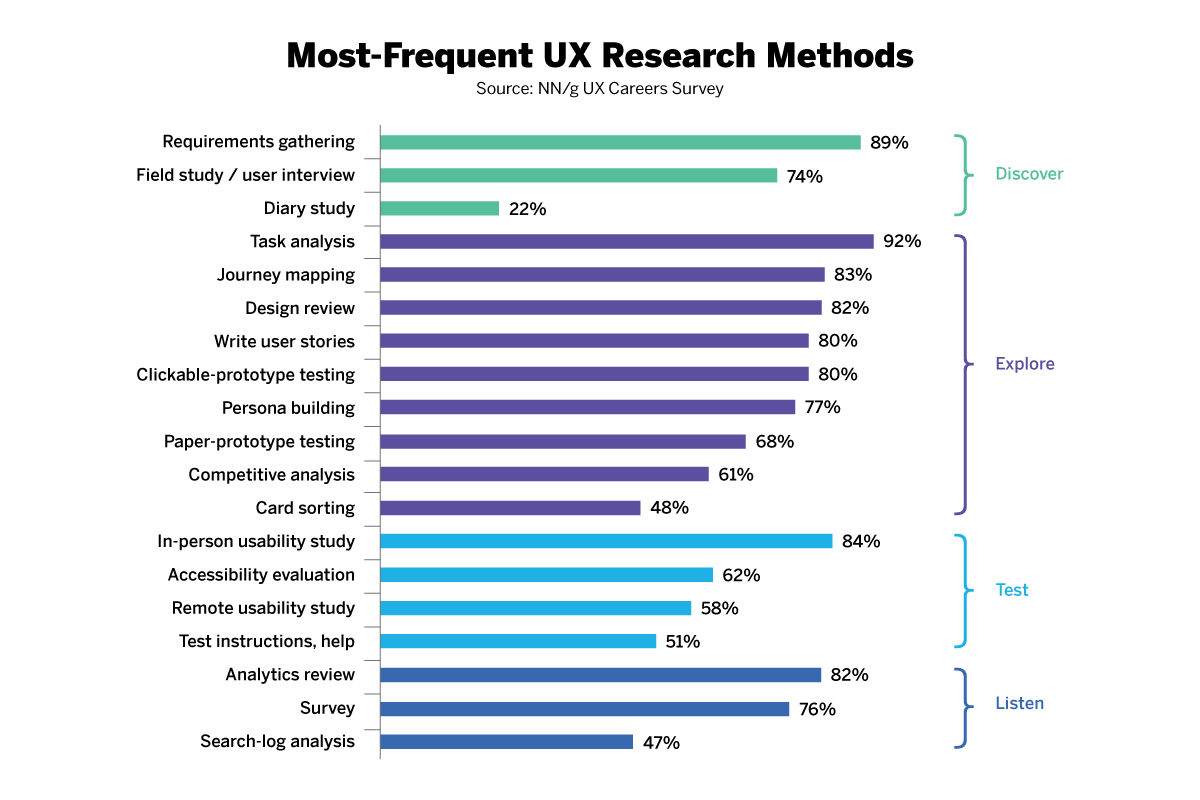
UX research surveys or questionnaires can discover data at scale through in-person or remote polling, with specific questions designed to collate useful information about user experience.
User groups or focus groups are a form of a structured interview that consults members of a target audience on their experience, views, and attitudes towards the product or solution. They usually involve neutral parties, such as a moderator and note-taker, and are led by a researcher who asks open-ended questions focused on specific aspects of an investigation.
User interviews are one-on-one structured interviews with a target audience member, led by a UX researcher to understand more about personal experiences with the product. These user interviews can be directed to compare and contrast answers between users, or non-directed, where users lead the conversation.
Ethnographic interviews take place within the target users’ typical environment to get a better context-of-use view. Field studies and site visits are similarly observational in nature, and take place in situ where the product or service is used, but may involve larger groups.
This is not a comprehensive list of research techniques but represents some of the main ways UX researchers might perform usability testing or trial UX design.
When to conduct user experience research
Before launching a new product or service, understanding user preferences that could impact your design or development is key to success. The earlier user experience research is performed, the more effective the end product or service will be, as it should encompass the insights learned about your target audience.
As a product and service’s use and value evolve over its lifecycle, the user experience will change over time. User research should be undertaken on an ongoing basis to determine how to adapt to users’ new needs and preferences.
Five basic steps to conducting UX research
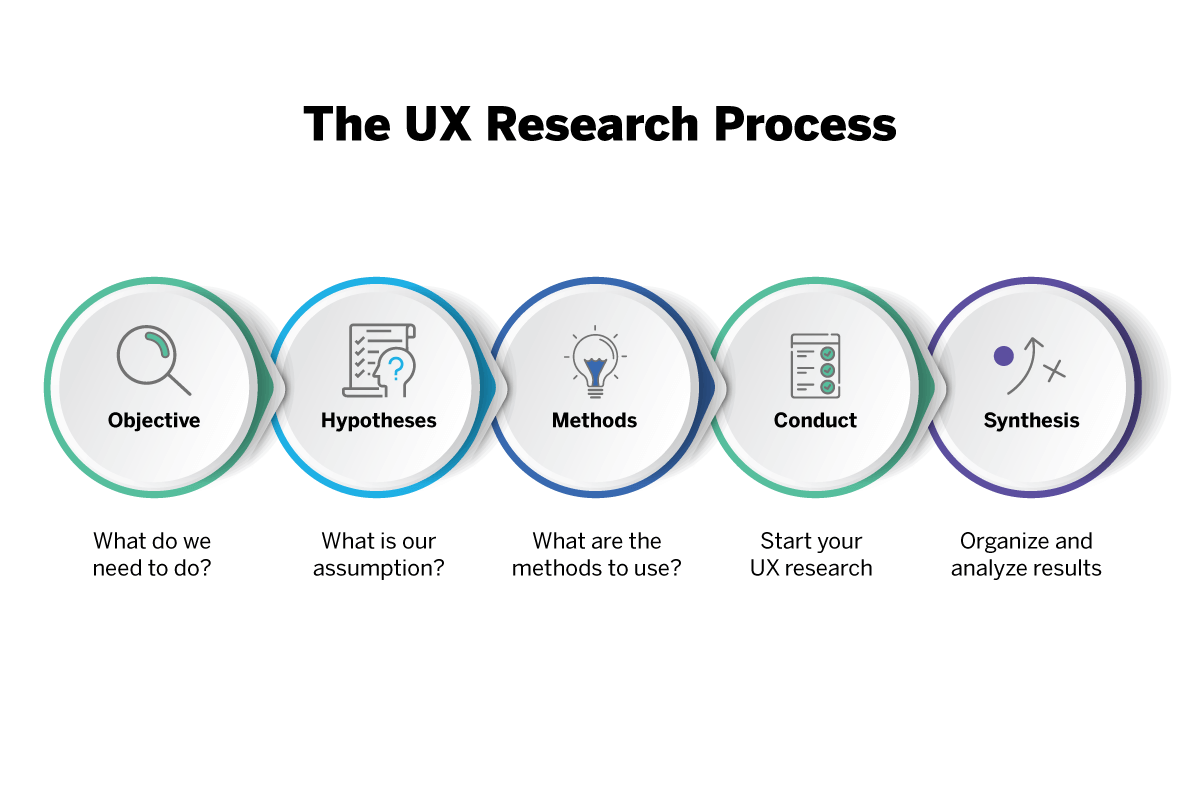
If you’re new to UX research, here’s a step-by-step list of what to consider before you begin your UX testing program:
- Objectives What do you need to find out about your users and their needs?
- Hypothesis What do you think you already know about your users?
- Methods Based on your deadline, project type, and the size of your research team, what UX research methods should you use?
- Process Using your selected UX research method(s), begin collecting data about your users, their preferences, and their needs.
- Synthesis Analyze the data you collected to fill in your knowledge gaps, address your hypothesis and create a plan to improve your product based on user feedback.
Qualtrics makes UX research simple and easy
User experience research and user testing are multifaceted and can involve a lot of both quantitative and qualitative data. To ease the process and make sure it is efficient and scalable, it’s best conducted using a highly responsive platform that allows you to collect data, analyze trends and draw conclusions all in one place.
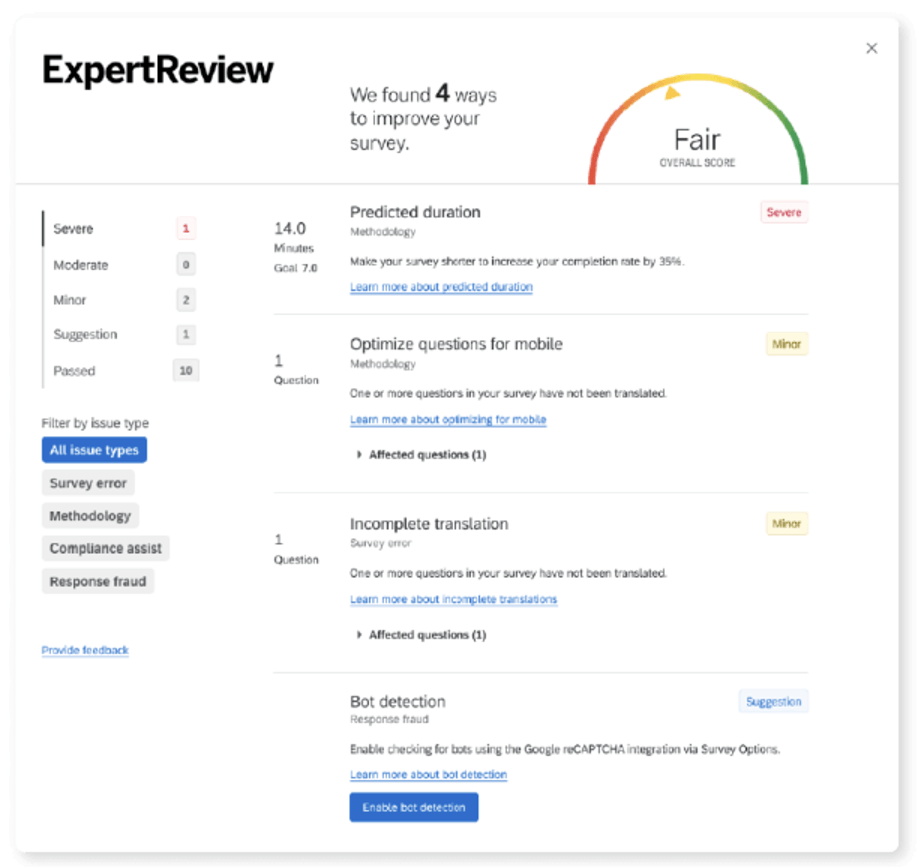
Whether you need attitudinal or behavioral insights, Qualtrics is your go-to solution for collecting all kinds of UX data and making use of it in the context of your wider CX program .
Conduct in-person studies or send beautifully designed surveys easily and quickly, and view your results via custom dashboards and reports using the most sophisticated research platform on the planet.
Free eBook: The essential website experience & UX playbook
Related resources
User experience 20 min read, user experience surveys 9 min read, ux research tools 8 min read, user analytics 11 min read, rage clicks 11 min read, user experience analytics 10 min read, website user experience 14 min read, request demo.
Ready to learn more about Qualtrics?
- Skip to main content
- Skip to primary sidebar
- Skip to footer
- QuestionPro

- Solutions Industries Gaming Automotive Sports and events Education Government Travel & Hospitality Financial Services Healthcare Cannabis Technology Use Case NPS+ Communities Audience Contactless surveys Mobile LivePolls Member Experience GDPR Positive People Science 360 Feedback Surveys
- Resources Blog eBooks Survey Templates Case Studies Training Help center
User Experience Research: Definition, Types, Steps, + Uses

Have you ever noticed how your favorite applications and websites appear to read your mind? How do they smoothly anticipate your wants and make you feel like a tech-savvy superhero? It isn’t magic; it is the result of User Experience Research!
UX research is a dynamic and ongoing process that is essential in developing effective and user-friendly products or services. It fills the gap between user expectations and design decisions, resulting in higher product satisfaction and better business-related results.
Continue reading to learn more about user experience research, how to do it, and how researchers may use it.
What is User Experience research?
User Experience research or UX research is defined as users’ systematic study to discover behaviors, needs, motivations, and trends through observations, analysis, and other user feedback.
UX researchers use different methods to understand problems and draw opportunities to stand out amongst their competition. Organizations conduct UX research to precisely understand how real customers react to the products or services in the real world.
Types of UX research methods
We can divide UX research into two dimensions depending on the product type, its environment, the research size, and your timelines. Let’s look at both measurements.
Quantitative vs. qualitative research
Quantitative research is the study of a population through the use of surveys and questionnaires. Quantitative research helps to generalize findings and understand what a specific population likes and dislikes. This data collection technique is generally mathematical in nature.
Qualitative research helps researchers gather information by observing users in field studies or focus groups. Qualitative research brings sense to the motivations and reasons for consumer behavior. The users are generally in small numbers belonging to diverse backgrounds and help answer the ‘how’ and ‘why’ questions about consumer behavior.
LEARN ABOUT: Qualitative Research Questions and Questionnaires
Attitudinal vs. behavioral research
“Attitudinal research” applies to what users say, while “behavioral” applies to what they really do. What users and customers usually say and what they do are sometimes pretty different. Researchers often conduct attitudinal research to measure customers’ needs and beliefs.
However, researchers lean towards behavioral research for insights as data on what users tend to do is more relevant. Website A/B testing is an excellent example of behavioral research because it gives researchers critical insights into how users perceive and act on different versions of the same site.
Steps to conduct user experience research
Conducting user experience research is a structured procedure that helps discover significant insights for improving the user experience. Here are the five steps to conducting user experience research:
Step 1: Define objectives
Always define the goals of your research before you act. Understand what you want to discover about your customers and their requirements.
By defining the objectives of your study, you can set the foundation for targeted and purposeful studies. Your goals should include a thorough understanding of your clients and their individual needs. This first stage acts as a compass to ensure that your research efforts are focused on measurable outcomes.
Step 2: Set a hypothesis
Set a hypothesis on what you feel you know about the users. This hypothesis serves as a preliminary assumption, a starting point that you will test and modify during the study process. A well-crafted hypothesis helps guide your research efforts and serves as the foundation for structured inquiry.
Step 3: Choose a suitable method(s)
Choosing the best research techniques is similar to choosing the right tools for a job. The method you’ll adopt is heavily influenced by factors such as project kind, available resources, research team size, and deadlines.
Whether you use surveys, interviews, usability testing, or a combination of methodologies, the goal is to customize your options to the specific context of your research, assuring effective data collecting and insight development.
Step 4: Apply the research method(s)
Conduct research using the research method(s) you chose and start collecting user data about their preferences, likes, dislikes, and needs. Conducting user experience research involves actively engaging with your target users and collecting valuable data.
This step entails creating surveys, setting up usability testing, conducting user interviews, or deploying any other chosen methodologies. UX researchers use a number of user research methods to conduct UX research. By directly interacting with users, you gain firsthand insights into user behaviors, preferences, and pain points.
Step 5: Synthesize feedback
Compiling and synthesizing the feedback is critical as data from your research activity comes in. This involves thoroughly examining user data and discovering trends, patterns, and variations. Collect and analyze the user-feedback data to fill in your knowledge gaps. Use this knowledge to improve and enhance your offering.
You can develop and improve your offers based on actual consumer demands by using synthesized feedback as a source of insights to direct your decision-making.
Uses of User Experience Research
UX research is a comprehensive toolkit for researchers. It allows them to navigate different stages of design and development while uncovering a variety of user insights. Researchers use UX research for the following:
Discovery means understanding what the users find relevant. Researchers either interview the user in their environment or ask them to maintain a record of their daily interaction with a design. Researchers look for insights into user habits, needs, and preferences during this phase.
UX researchers may conduct interviews with users in their natural surroundings or ask them to keep a record of their everyday experiences with a specific design to do this. Researchers can better empathize with users’ experiences and discover insights that help drive the design process by immersing themselves in their reality.
Exploration involves investigating many options and solutions to meet the different requirements of customers. During this phase, researchers look at possibilities to address the needs of all users. Card sorting is one of the interactive UX research methods to understand precisely what people like and dislike.
This interaction method helps researchers better understand users’ mental models and how they expect information to be organized. By investigating these preferences, UX designers may create interfaces and structures that fit customers’ needs, resulting in more intuitive and user-friendly designs.
Usability Testing
Usability Testing is an important stage in the UX research process because it allows designs and prototypes to be thoroughly tested. Testing helps you evaluate the design process thoroughly. UX researchers evaluate the product’s usability, functionality, and overall experience.
Usability testing involves observing real users interact with a prototype, product, or service. A UX researcher can modify the design and make informed decisions to produce a more seamless user experience by identifying pain points, problems, and places of misunderstanding. Companies test products to ensure they’re easy to use and accessible to everyone.
Listening to user feedback and viewpoints is essential for getting insights and putting design issues into context. Listening assists UX researchers in putting issues in perspective. It helps them find unseen problems to fix quickly.
Surveys and Questionnaires are useful tools that help researchers track user feelings. UX researchers can frequently seek user feedback via surveys, questionnaires, and feedback sessions. This method enables researchers to measure user sentiments, identify potential problems that may not be obvious at first, and fix them as soon as possible.
Benefits of UX research
The benefits of conducting UX research are numerous, contributing to both product quality and business success. Here’s a closer look at the main benefits of incorporating UX research into your design and development processes:
Better products
Involving your potential customers directly helps you gain a lot of knowledge on what the customers prefer, what their pain points are, and what will help the overall improvement of the product.
Happy users
UX research helps you collect unbiased feedback directly from your customers – your most reliable feedback source. It is the best actionable feedback source because it is not influenced by company leaders, investors, or other outsiders.
Business growth
Understanding what your customers seek helps organizations spend less money and time correcting flawed designs. It helps to speed up the product development process and boosts customer satisfaction.
User Experience research is an ongoing process. It connects user expectations and design decisions to create seamless product experiences. It discovers user behaviors and preferences using approaches such as quantitative and qualitative research, as well as attitudinal and behavioral insights.
QuestionPro research enables you to effectively develop, distribute, and analyze surveys, acquire useful insights, and make data-driven decisions across a wide range of research areas. It speeds up the research process, increases user interaction, and ultimately helps you better understand your target audience and improve your products or services.
Looking to deliver an exceptional customer experience? Discover more about how to delight your customer at every touchpoint and turn them into brand advocates.
FREE TRIAL LEARN MORE
MORE LIKE THIS

Data Information vs Insight: Essential differences
May 14, 2024

Pricing Analytics Software: Optimize Your Pricing Strategy
May 13, 2024

Relationship Marketing: What It Is, Examples & Top 7 Benefits
May 8, 2024

The Best Email Survey Tool to Boost Your Feedback Game
May 7, 2024
Other categories
- Academic Research
- Artificial Intelligence
- Assessments
- Brand Awareness
- Case Studies
- Communities
- Consumer Insights
- Customer effort score
- Customer Engagement
- Customer Experience
- Customer Loyalty
- Customer Research
- Customer Satisfaction
- Employee Benefits
- Employee Engagement
- Employee Retention
- Friday Five
- General Data Protection Regulation
- Insights Hub
- Life@QuestionPro
- Market Research
- Mobile diaries
- Mobile Surveys
- New Features
- Online Communities
- Question Types
- Questionnaire
- QuestionPro Products
- Release Notes
- Research Tools and Apps
- Revenue at Risk
- Survey Templates
- Training Tips
- Uncategorized
- Video Learning Series
- What’s Coming Up
- Workforce Intelligence
Integrations
What's new?
Prototype Testing
Live Website Testing
Feedback Surveys
Interview Studies
Card Sorting
Tree Testing
In-Product Prompts
Participant Management
Automated Reports
Templates Gallery
Choose from our library of pre-built mazes to copy, customize, and share with your own users
Browse all templates
Financial Services
Tech & Software
Product Designers
Product Managers
User Researchers
By use case
Concept & Idea Validation
Wireframe & Usability Test
Content & Copy Testing
Feedback & Satisfaction
Content Hub
Educational resources for product, research and design teams
Explore all resources
Question Bank
Research Maturity Model
Guides & Reports
Help Center
Future of User Research Report
The Optimal Path Podcast
Maze Guides | Resources Hub
What is UX Research: The Ultimate Guide for UX Researchers
0% complete
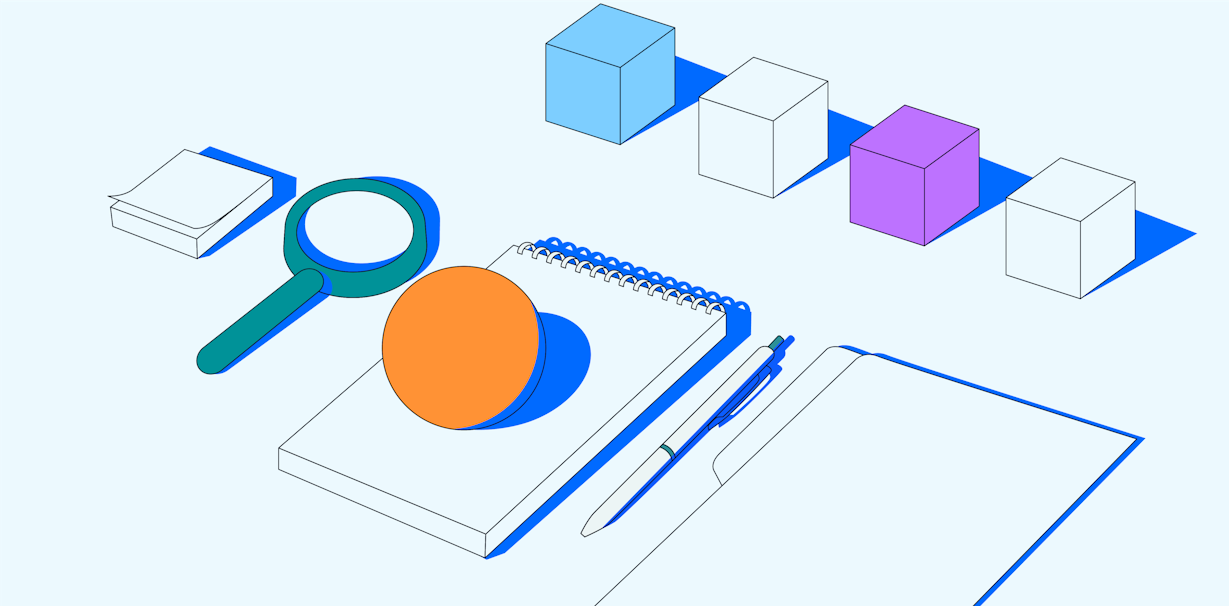
User experience research is a crucial component of the human-centered design process and an essential part of creating solutions that meet user expectations and deliver value to customers. This comprehensive guide to UX research dives into the fundamentals of research and its various methods and includes tips and best practices from leading industry experts.

Make informed design decisions with user research
Validate ideas, test prototypes, assess usability, and deliver real, actionable insights to your product team.

UX research: Your ultimate guide to nailing user experience and exceeding expectation
User experience research, or UX research , is the process of gathering insights about users' behaviors, needs, and pain points through observation techniques and feedback methodologies. It’s a form of user research that looks at how users interact with your product, helping bridge the gaps between what you think users need, what users say they need—and what they actually need.
The goal of UX research is to understand your users and gain context and perspectives to help make informed decisions and build user-centered products. It’s an essential part of designing, developing, and launching a product that will be an instant hit—but it should also be used throughout the product’s lifecycle post-launch to keep updated, and ensure new features are relevant to your audience.
As Sinéad Davis Cochrane , UX Manager at Workday, explains: “UX research represents insights gathered directly from users and customers, that helps you make product decisions at every stage of the development process.”
Is UX research the same as user research?
The terms ‘user research’ and ‘UX research’ are often used interchangeably, but they do differ. User research is the parent of UX research; it’s a broader research effort that aims to understand the demographics, behaviors, and sentiments of your users and personas.
UX research, on the other hand, is a type of user research that’s specific to your product or platform. Where user research focuses on the user as a whole, UX research considers how they interact with, respond to, and feel about your product or concept itself.
In both cases, the overarching goal is to get to know your users, understand what they need from your product, gain context to help make informed decisions, and build human-centered experiences.
Involve your users at every stage of your design process
Create research projects with Maze using customizable templates, and start making data-informed product decisions

Why is conducting UX research important?
In an ideal world, users would find your product easy to navigate, your net promoter score (NPS) would be off the charts, and you’d see adoption and activation rates skyrocket. In reality, however, this can be a challenging dream to achieve—but it is possible. The only way to build a product that users really resonate with is by involving them throughout the development process and building with them.
UX research is more than just a single ‘step’ in the development process: it should happen continuously, throughout the product lifecycle—so whether you’re building new products or iterating on existing ones, every decision is informed by user insights.
Here’s what you can achieve with continuous UX research:
Make informed decisions based on data
Our 2023 Continuous Research Report shows that 74% of people who do research (PWDR) believe research is crucial to guiding product decisions. Plus, 60% of respondents find that user recommendations inspire new product ideas.
Getting stakeholder buy-in to product decisions can be challenging, but when you suggest changes based on UX research, you have data to back up your suggestions. Your users inform your product, becoming the decision-makers as well as the customer.
UX research helps reduce and mitigate the risk of building the wrong thing—or building the right thing in the wrong way.

Sinéad Davis Cochrane , UX Manager at Workday
Reduce bias in the UX design process
There are hundreds of cognitive biases identified by psychologists, many of which unknowingly influence our decisions and the products we build. But a key principle of great UX design is to put aside existing beliefs, and learn from your users.
“You have to be humble, optimistic, and open-minded,” says Bertrand Berlureau , Senior Product Designer at iMSA. Using effective UX research, you can root out bias or assumptions, and follow real human behavior to inform product decisions.
According to Sinéad, you should consider these questions early in the design process:
- “What are your assumptions?”
- “What are some of the assumptions you’ve been making about your end-users and product without any evidence?”
- “What are the anecdotes or coincidental pieces of information that you hold, and how can you challenge them?”
Biases can subconsciously affect research and UX design, and it can be tricky to identify them. The first step to overcoming cognitive biases is by being aware of them. Head to chapter three of our cognitive biases guide to discover how.
Test and validate concepts
The power of UX research is that it can prove you right or wrong—but either way, you’ll end up knowing more and creating a product that provides a better user experience. For Bertrand, an idea without a test is just an idea. So, before the design process, his team starts with these user research methods:
- Face-to-face and remote user interviews
- Focus groups
- Co-creativity sessions through design sprints, quick prototyping, and hypothesis concepts
- User testing
UX research is the only way to unequivocally confirm your product is solving the right problem, in the right way. By speaking directly to real users, you can pinpoint what ideas to focus on, then validate your proposed solution, before investing too much time or money into the wrong concept.
Work on solutions that bring real value to customers
Another main benefit of UX research is that it allows product teams to mitigate risk and come up with products users want to use. “One of the main risks we need to control is whether users actually want to use a solution we've implemented,” explains Luke Vella , Group Product Manager at Maze. “UX research helps us reduce this risk, allowing us to build solutions that our customers see as valuable and make sure that they know how to unlock that value.”
Luke works on pricing and packaging, an area that requires constant user research. On one hand, he and his team want to understand which problems their users are facing and come up with plans to satisfy those different needs. On the other hand, they need to make sure they can monetize in a sustainable way to further invest in the product. You can only get this perfect balance by speaking to users to inform each step of the decision.
Market your product internally and externally
UX research also plays a crucial role in helping product marketers understand the customer and effectively communicate a product's value to the market—after all, a product can only help those who know about it.
For example, Naomi Francis , Senior Product Marketing Manager at Maze, uses different research methods to inform marketing strategy. Naomi conducts user interviews to build personas, using user research to collect insights on messaging drafts, product naming, and running surveys to gather user feedback on beta products and onboarding.
Understanding how and why customers need and use our product pushes marketing launches to the next level—you can get a steer on everything from messaging to language and approach.

Naomi Francis , Senior Product Marketing Manager at Maze
Types of UX research
All UX research methods fit into broader UX research techniques that drive different goals, and provide different types of insight. You can skip to chapter seven for a rundown of the top 9 UX research methods , or keep reading for a deep dive on the main types of UX research:
- Moderated and unmoderated
- Remote and in-person
- Generate and evaluate
- Qualitative and quantitative
- Behavioral and attitudinal
Where moderated/unmoderated and remote/in-person refer to the way research is conducted , the other types of UX research reflect the type of data they gather.
The most powerful insights come from a mixture of testing types—e.g. attitudinal and behavioral, generative and evaluative, and quantitative and qualitative. You don’t need to run all types of research at all times, but you’ll benefit from gathering multiple types of data throughout different stages of product development.
Moderated research
Moderated research is any research conducted with a facilitator or researcher present. A moderator may observe research sessions and take notes, ask questions, or provide instruction to participants where needed.
Like all research, it’s crucial a moderator doesn’t overly guide participants or influence results. Due to certain types of cognitive biases , people may behave differently while being observed, so researchers often opt for unmoderated methods to avoid results being impacted.
UX research methods for moderated research
- User interviews to speak directly with your target user face-to-face
- Focus groups to gather feedback on a variety of topics
- Moderated usability testing to hear the thought process behind the actions
Unmoderated research
As the name suggests, unmoderated research refers to the lack of a moderator. Often used in tandem with remote research , users complete tasks independently, guided by pre-written instructions.
Unmoderated research is helpful to ensure users are acting entirely of their own volition, and it has a lower cost and quicker turnaround than moderated research—however it does require efficient planning and preparation, to ensure users can navigate the tasks unaided.
UX research methods for unmoderated research
- Unmoderated usability testing to see how easily users navigate your product
- Live website testing to witness users interacting with your product in real time
- Surveys to have users answer specific questions and rate design elements
Remote research
An incredibly flexible approach, remote research is often favored due to its time-to-results and cost savings. Remote research can be moderated or unmoderated, and is conducted using UX research tools which record user behavior, feedback, and screen recordings.
Another key benefit is its reach and accessibility—by moving research to a virtual platform, you can access users from anywhere in the world, and ensure research is inclusive of those with different abilities or requirements, who may otherwise be unable to take part in traditional in-person research.
UX research methods for remote research
- Usability testing to evaluate how accessible your product is
- Card sorting to understand how users categorize and group topics
- Concept testing to assess what ideas users are drawn to
- Wireframe or prototype testing to invite users to test a rough version of the design
In-person research
Research conducted in-person is typically more expensive, as it may require travel, accommodation, or equipment. Many traditionally in-person research methods can easily be performed remotely, so in-person research is often reserved for if there’s additional needs for accessibility, or if your product requires physical testing, safety considerations or supervision while being tested.
UX research methods for in-person research
- Guerrilla research to speak to random users and gather feedback
- User interviews to connect with users and read body language
- Field studies to gauge how your product fits into a real world environment
Generative research
Generative research provides a deep understanding of your target audience’s motivations, challenges, and behaviors. Broadly speaking, it pinpoints a problem statement, identifies the problem to be solved, and collects enough data to move forward.
It should happen before you even begin designing, as it helps you identify what to build, the types of problems your user is facing, and how you can solve them with your product or service.
UX research methods for generative research
- Field studies to get familiar with users in their authentic environment
- User interviews to ask open-ended questions about pain points
- Diary research to keep a log of users’ behaviors, activities, and beliefs over time
- Open card sorting to have users define and name their own categories
Evaluative research
Evaluative research focuses on evaluating a product or concept in order to collect data that will improve the solution. Evaluative research usually happens early on and is used in a continuous, iterative way throughout the design process and following launch. You can use this type of UX research to assess an idea, check navigation, or see if your prototype meets your user’s needs.
UX research methods for evaluative research
- Usability testing to see if your platform is easy and intuitive to use
- A/B testing two versions of a design to see which one works best
- Tree testing to assess if your website’s information architecture (IA) makes sense
- Five-second tests to collect first impressions
Behavioral research
This type of research refers to observation—it’s human nature that sometimes what we say, or what we think we’ll do doesn’t match up to what we actually do in a situation. Behavioral research is about observing how users interact with your product or how they behave in certain situations, without any intervention.
UX research methods for behavioral research
- Observation in labs or real environments to witness behavior in real time
- Tree testing to view which paths users take on a website
- Diary research to see how users interact with your product in real life
Attitudinal research
Attitudinal research is the companion to behavioral research—it’s about what people say, and how they feel. In attitudinal research, you ask users to share their own experiences and opinions; this may be about your product, a concept, or specific design element. With a mix of attitudinal and behavioral research, you can get a broader picture of what your user truly needs.
UX research methods for attitudinal research
- Focus groups to understand users’ perspectives on your product
- User interviews to ask people questions about your product directly
- Surveys to gather insights on user preferences and opinions
Quantitative research
Quantitative and qualitative research methods are two types of research that can be used in unison or separately. Quantitative research comes from data and statistics, and results in numerical data.
It allows you to identify patterns, make predictions, and generalize findings about a target audience or topic. “[At iMSA] We analyze a lot of metrics and specific data like traffic analytics, chatbot feedback, user surveys, user testing, etc. to make decisions,” explains Bertrand. “The convergence of all the data, our user’s needs, governs the choices we make.”
Types of quantitative results you can find through UX research include:
- Time spent on tasks
- Net promoter score (NPS)
- System usability score (SUS)
- Number of clicks taken to complete a task
- Preference percentage on A/B tests
UX research methods for quantitative research
- A/B testing to see which option your users likes best
- Tree testing to get data on which paths users follow on your website
- Usability testing to get a score on system usability
- Heatmaps to spot where users spend most of their session time
Qualitative research
Qualitative research is about understanding the why behind the data. It comes from comments, opinions, and observations—this type of research answers why and how users think or act in a certain way. Qualitative data helps you understand the underlying motivations, thoughts, and attitudes of target users. For this reason, attitudinal research is often qualitative (though not always).
UX research methods for qualitative research
- Interviews to discover your users’ motivations and frustrations
- Open question surveys to learn users’ pain points in their own words
- Focus groups to observe users’ interacting with your product
- Think aloud usability tests to hear commentary behind each user decision
💡 Product tip:
Maze allows you to record your participants' screen, audio, and video with Clips, so you can collect qualitative and quantitative insights simultaneously.
When should you conduct UX research?
The truth is, you should always be researching. When NASA wants to send a new shuttle into space, they don't build a rocket and launch it right away. They develop a design, test it in simulations and lab environments, and iterate between each stage. Only once they’ve run all the foreseeable scenarios do they put a person on the ship. Why should your product be any different?
With an overwhelming 83% of product professionals surveyed in our 2023 Continuous Research Report believing research should happen at all stages, it’s surprising that just 36% run tests after launch. While time and budget can make continuous research a challenge, testing at different stages gives you access to unique insights about your users and how they interact with your product.

That being said, if you can only afford to research a few times throughout the development process , here are some key moments to focus on:
Before developing the product
This is when you need to conduct the most extensive and detailed part of your research. During this phase, you’ll want to conduct generative research to get to know exactly:
- Who your user is
- The types of problems they’re facing (and what kind of product they want to solve them)
- What their expectations on a product or service like yours are
- What they like or dislike about your competitors
- Where they currently go to solve the mentioned problems
- What needs to happen for them to change companies (if they’re using a different product)
You can use a variety of UX research methods like focus groups and surveys to gather insights during this stage.
Remember: This step applies even if your product is already live, if you’re thinking of introducing a new feature. Validate your idea and investigate potential alternatives before you spend time and money developing and designing new functionality.
When you want to validate your decisions
This is the point where you’ll run through a few cycles of researching, building, and iterating, before launching your product. The Maze Product team does this through continuous product discovery, via a dual-track habit:
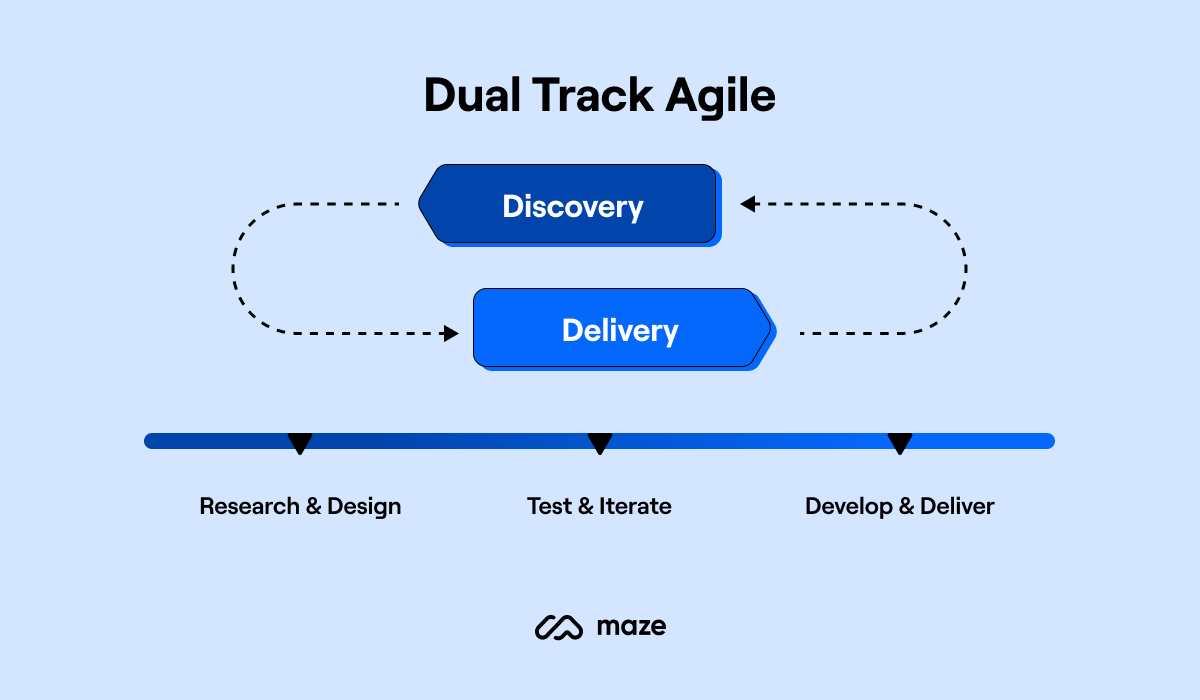
Conduct research regularly while developing and building your product to see if you’re headed in the right direction. Let the research findings feed your deliverables.
Gather qualitative insights on user sentiment through surveys or focus groups. Test your wireframe or sketches to get quantitative answers in the form of clicks, heatmaps, or SUS. Use card sorting to generate ideas, tree testing to assess IA, or prototype testing to assess the usability of a beta version. The options are endless, so there’s no reason to miss maximizing your research at this stage and gather insights to power product decisions.
To evaluate product accessibility
Your product will be used by a multitude of diverse, unique users. Your research participants should be representative of your real audience, which means including all usage scenarios and user personas. Usability testing is one form of UX research that can be used here to ensure your product works for all its users, regardless of ability or need.
There are many ways to ensure your design is inclusive and accessible , including:
- Testing alt-texts, screen-reading capabilities, and color combinations
- Avoiding screen flashes or sudden pop-ups that may be triggering for certain conditions
- Being intentional in what language and imagery is used
Once your product is live
Research doesn’t end once you push your platform to production. Conduct Live Website Testing to evaluate how well your product is meeting your users' expectations and needs. This type of research invites you to answer the question: did we nail it?
Testing your live website also allows you to see how your users interact with your design in a real environment, so you can identify and solve mistakes fast. Pay close attention to loading times, error messages, and other quantitative data that may indicate bugs. You can also conduct regular sentiment checks by embedding feedback surveys into your product itself, to assess user satisfaction and NPS in a few clicks.
TL;DR: Why, how, and when to conduct UX research
The more you understand your customers, the better you can create products that meet expectations, tailor your strategy to their specific needs, and increase your chances for success. Plus, UX research allows you to create unbiased products that put your customers at the center of your business.
To conduct UX research, you’ll need to mix the stage of your product lifecycle with the right research type and methods. Meaning, while you need to conduct UX research continuously, you should look for different types of insights depending on the development stage you’re at and what your current objective is.
For example, if you want to test your live product, you should conduct a mix of quantitative and qualitative evaluative research. That means you might want to perform:
- Usability tests
- Feedback surveys
- Five-second tests
- Prototype testing
Now we’ve covered the what and why of UX research, let’s get into the how. Continue to the next chapter to learn how to create a UX research strategy that blows your competitors away.
Frequently asked questions
What are some examples of UX research?
Some examples of UX research include:
- A/B testing
- Prototype or wireframe testing
- Card sorting
- User interviews
- Tree testing
- 5-second testing
- Usability testing
What are the basics of UX research?
The basics of UX research are simple: you just need a clear goal in mind and a mix of quantitative and qualitative tests. Then, it's a case of:
- Determining the right testing methods
- Testing on an audience that’s an accurate representation of your real users
- Doing continuous product discovery
- Performing unbiased research to build an unbiased design
- Iterating and building user-centric products
UX research gets easier when you use a product discovery platform like Maze. This tool allows you to run multiple types of product research such as usability, prototype, card sorting, and wireframe tests—and get answers within hours.
Is UX research hard?
UX research isn’t hard, especially when you use an intuitive tool for product discovery—like Maze. Maze allows you to build tests using its multiple available templates. It also lets you bring your own users or recruit from its panel and creates an automated, ready-to-share metrics report. Maze gives you answers to tests within hours so you can improve your UX based on real user feedback fast.
Building a UX research strategy
User experience (UX) research: Definition & Methodology

User experience (UX) research plays a crucial role in understanding user behavior, preferences, and needs. It helps businesses create products and services that meet user expectations, leading to improved customer satisfaction and loyalty. In this blog post, we will delve into the definition and methodology of UX research, its importance, ROI, methods, when to conduct it, and the basic steps involved.
User experience (UX) research is a critical component of product development and marketing strategies. It involves studying users' behaviors, needs, and motivations through various research methodologies to create products that provide meaningful and relevant experiences. Understanding the definition and methodology of UX research can significantly impact a business's success in today's competitive market.
What do we mean by user experience?
User experience (UX) refers to the overall experience a person has when interacting with a product or service. It encompasses a variety of factors, including usability, accessibility, and emotional impact. A positive user experience can lead to increased customer satisfaction, loyalty, and advocacy, while a negative experience can result in frustration and abandonment.
What is user experience (UX) research?
User experience (UX) research is the process of understanding user behaviors, needs, and motivations through various qualitative and quantitative research methods. It helps businesses gain insights into how users interact with their products or services, identify pain points, and make informed decisions to improve the overall user experience.
Why is UX research important?
UX research is essential for businesses to create products and services that meet user expectations. It helps identify user needs and preferences, uncover usability issues, and validate design decisions. By understanding user behaviors and motivations, businesses can improve customer satisfaction, loyalty, and retention.
What’s the ROI of performing UX research?
The return on investment (ROI) of UX research can be significant. By investing in UX research, businesses can reduce development costs, increase revenue through improved customer satisfaction and loyalty, and gain a competitive advantage in the market. Additionally, UX research can help businesses avoid costly mistakes by identifying potential issues early in the development process.
User experience research methods
There are various UX research methods, including interviews, surveys, usability testing, and analytics. Each method has its strengths and weaknesses, and the choice of method depends on the research goals and the nature of the product or service being studied.
When to conduct user experience research
UX research should be conducted throughout the product development process, from the initial concept stage to post-launch evaluation. Conducting research early and often helps identify user needs and preferences early on, leading to better design decisions and a more successful product launch.
Five basic steps to conducting UX research
- Define research goals: Identify what you want to achieve with your research, such as understanding user needs or evaluating a new feature.
- Choose the right methodology: Select the research methods that will help you achieve your goals, such as interviews, surveys, or usability testing.
- Recruit participants: Find participants who match your target audience to ensure that your findings are relevant and actionable.
- Conduct the research: Collect data using your chosen methods, and analyze the results to gain insights into user behaviors and preferences.
- Implement findings: Use the insights gained from your research to make informed decisions about your product or service, such as refining features or improving usability.
User experience (UX) research is a vital aspect of product development and marketing strategies. By understanding the definition and methodology of UX research, its importance, ROI, methods, when to conduct it, and the basic steps involved, businesses can create products and services that meet user expectations and lead to increased customer satisfaction and loyalty.
Are you ready to improve your product's user experience? Contact us today to learn more about how UX research can help you create products that users love.

Mark Campen
The Best Uses of AI for Business
The psychology behind ux/ui design.
Get Started Now
User experience (UX) research
UX research is the practice of studying user interactions to help with the design of people-first products and experiences.
What is UX research and why is it important?
As UX research becomes more commonplace in organizations big and small, its definitions and applications have naturally evolved. Traditionally, user experience research is the practice of studying user interactions to help with the design of people-first products and experiences.
Nonetheless, the meaning of UX can vary depending on who you’re talking to. For product teams, UX research might mean validating prototypes and concepts, and for marketing teams, it may mean testing brand designs and messaging before a launch. In other words, UX research is no longer a practice held in one corner of the business. The most successful organizations empower all teams to collect user and customer insights in order to make better business decisions.
Types of UX research and when to use them
Before we jump into individual research methods, or the tactics used for conducting UX research, there are big-picture questions that need to be addressed first. And that’s: what types of UX research are there?
- Qualitative vs. quantitative research : When it comes to understanding your users, you may find yourself wondering if your UX research approach should be qualitative or quantitative . And it’s important to figure that out because the two types uncover very different insights.
- Attitudinal vs. behavioral research : Though sometimes misconstrued as being the same thing, attitudinal and behavioral research are not synonymous. However, as with quantitative and qualitative research, the two can be useful when assessed concurrently.
- Generative vs evaluation research : The goals of generative and evaluation research (sometimes referred to as evaluative research) are very different. Generative research helps you define the problem you’d like to design a solution for. Evaluation research, on the other hand, helps you evaluate an existing design (in prototype, final, or some other form).
UX research methods
UX needs to be a strategic initiative that drives a culture of user-centric design and thinking—informing everything from the product itself to marketing campaigns and messaging to brand design and social media. With that said, there are a lot of different user research techniques that help teams collect the insights needed specific for every role.
Let’s take a look at some of the more common methods now.
Remote usability testing
It might be obvious that remote usability testing is a great method for conducting UX research—if only by its name alone. This method of remote research uses an insight platform to record the screen (and voice, depending on the software you choose) of test participants as they interact with your product or experience in their natural environment—at home, in their office, or a specific location.
Through usability testing, designers, product managers, and researchers alike can uncover and understand how real people respond to products and experiences. From what they like and dislike, to where they get stuck and confused, to areas of improvement, the valuable insights gathered from these tests are eye-opening.
Diary studies
Diary studies are a form of longitudinal research (research that takes place over a long period with the same participants). Typically, users self-report their activities at regular intervals to create a log of their activities, thoughts, and frustrations. It’s a useful approach for capturing organic feedback on activities that are repetitive, long, or unpredictable.
Card sorting
Card sorting is a qualitative research method used to group, label, and describe information more effectively—based on feedback from customers or users. Card sorting requires you to create a set of cards—sometimes literally—to represent a concept or item. These cards will then be grouped or categorized by your users in ways that make the most sense to them. Most commonly, it’s used when designing (or redesigning) the navigation of a website or the organization of content within it, because it helps to evaluate information architecture.
It may seem obvious, but through a series of expertly phrased and positioned questions, surveys allow you to empathize with your users in order to gain quantitative insights that aren’t as visible to developers, managers, and marketers. Listening to your customer can help you find new problems to solve or devise new ideas, and collecting customer feedback through surveys is an active, receptive, and honest way to do it.
Live interviews are a great way to collect qualitative insights. By having dynamic discussions, interviewees are able to observe verbal as well as non-verbal cues and ask open-ended questions to uncover those details that surveys and usability testing cannot. Interviewing is an especially useful UX research method for understanding complex feelings and experiences because it allows you to ask follow-up questions.
Learn more about UX research methods and when to use them here .
Human understanding. Human experiences.
Get the latest news on events, research, and product launches
Oh no! We're unable to display this form.
Please check that you’re not running an adblocker and if you are please whitelist usertesting.com.
If you’re still having problems please drop us an email .
By submitting the form, I agree to the Privacy Policy and Terms of Use .
- Integrations
- Learning Center
User Experience
Definition: User Experience refers to the feeling users experience when using a product, application, system, or service. It is a broad term that can cover anything from how well the user can navigate the product, how easy it is to use, how relevant the content displayed is etc.
What is User Experience?
User Experience (UX) is the holistic journey users traverse as they use a product. Not only does it include their direct interactions with the product, but also how it fits in with their overall task completion process.
Regardless of whether different aspects of the experience are under the direct control of the product or are merely associated with the product, the total experience is considered part of the UX from the user’s perspective. Every touchpoint between the customer and the company is included in the total User Experience.
What is the difference between UI and UX?
UI and UX are often used interchangeably, but when the acronyms are actually spelled out User Interface and User Experience are quite different.
The User Interface is literally what the user sees and interacts within the product: the buttons, the layout, the navigation, the form fields, etc. Much like the cockpit of a plane or the buttons on remote control, it is what a user sees, touches and clicks. “UI” can also sometimes be shorthand for the “look and feel” of a product.
User Experience encompasses a far wider swath of elements than the User Interface, although UI is definitely contained within this larger definition. The User Experience includes everything an end-user does related to the product, including how it fits into their overall workflow and the steps before and after the product is actually in use. Additionally, the User Experience covers how those interactions will change over time as the customer’s usage evolves and the product and company change.
What are UX design principles?
UX efforts concentrate on making the entire customer journey pleasant and productive. This begins with highlighting the value of the solution so it is clear what capabilities and benefits the product can offer potential and current customers—and that the value proposition is clearly desirable to the target market.
To achieve this, UX aims to make this value discoverable and accessible. That includes clear wording and imagery and a short and simple path to understand a product’s potential, as well as accounting for users that may have physical limitations.
Next up is spurring engagement and usage of the product, which entails a smooth and clear beginning experience and clear navigational hierarchy. Users must be able to start using the product and realizing the value as quickly as possible, even when it’s a large enterprise offering.
From here UX continues refining customer interactions, removing points of friction and minimizing the required steps to complete various tasks. As the product itself matures, UX can extend beyond the bounds of the product by assisting with related tasks that directly impact the value proposition and satisfaction for the actual product experience. This refinement can also include building consistency in the product and providing as much contextual guidance as possible.
All of these goals are accomplished by using a variety of tactics aimed at better understanding real-world user needs. One of the most critical is consistently challenging internal assumptions about what customers are trying to do and how they’re actually using the product versus what the product and UX teams think customers want and do. Confirming assumptions and theories—or discovering their flaws—will dictate further improvements.
What does a UX designer do?
A UX designer leverages a toolset spanning user research and testing, graphic design, layout, language, and wording. They may do some coding (usually in the HTML/CSS realm), create wireframes and mockups, design logos and buttons or even write the text that appears in the product.
To understand the customer experience, UX designers may perform or participate in customer interviews to get a better picture of what matters to customers and how they perform critical tasks (either with the product or using alternative methods). Once the product is ready, UX will often take the lead on usability testing, designing the scripts, analyzing the results or even conducting the tests themselves.
Once the product is shipping, UX designers will leverage analytics to dive deeper into the customer journey and trying to identify what workflows are successful and what narratives are hitting roadblocks where.
UX designers will also define the “visual grammar” for a product, either creating or selecting icons and typography that communicate the brand and provide visual cues to users, which they will grow familiar with overtime. They will also ensure the language used on the site is relevant and clear to the audience while also being consistent and familiar throughout the entire customer journey.
What is the value of UX design for product managers?
UX design and product management are two sides of the same coin; UX covers the user end and product management takes care of the business side of the house. But unlike a coin, there is plenty of overlap between the two disciplines.
Product managers essentially focus on the “what” part of the equation: What is the target market, what problems are the product trying to solve, what capabilities must be in place to solve those problems, what is the business model and value proposition, etc. Meanwhile, UX concentrates on the “how” component of product development, namely, how is the user going to complete their tasks.
By leaving the “how” to UX design, product management is able to spend their limited time on the many other aspects of the product to people with a more acute focus and expertise on the customer journey, usability and user interface. And by teaming up with UX design instead of trying to do it all themselves, product managers get the benefit of additional perspectives and viewpoints on creating an overall winning experience.
The best relationships between product management and UX design start by performing user research and developing use cases collaboratively. This creates a unified foundation as each party goes off to work on their own areas of focus and ensures that the user experience is fully informed by the business objectives and customer needs.
Product managers can also benefit from increasing their UX education and incorporating UX design into their overall approach. This ensures the strategy they set and vision they paint takes the user experience into full account, which is essential to the product’s ultimate success or failure.
Try ProductPlan free for 14 days
Share on mastodon.
Skip navigation

World Leaders in Research-Based User Experience
The definition of user experience (ux).

August 8, 1998 1998-08-08
- Email article
- Share on LinkedIn
- Share on Twitter
The first requirement for an exemplary user experience is to meet the exact needs of the customer, without fuss or bother. Next comes simplicity and elegance that produce products that are a joy to own, a joy to use. True user experience goes far beyond giving customers what they say they want, or providing checklist features. In order to achieve high-quality user experience in a company's offerings there must be a seamless merging of the services of multiple disciplines, including engineering, marketing, graphical and industrial design, and interface design.
It's important to distinguish the total user experience from the user interface (UI), even though the UI is obviously an extremely important part of the design. As an example, consider a website with movie reviews. Even if the UI for finding a film is perfect, the UX will be poor for a user who wants information about a small independent release if the underlying database only contains movies from the major studios.
We should also distinguish UX and usability : According to the definition of usability , it is a quality attribute of the UI, covering whether the system is easy to learn, efficient to use, pleasant, and so forth. Again, this is very important, and again total user experience is an even broader concept.
Related Courses
Writing compelling digital copy.
Use UX writing to shape your content to meet your readers' needs
Interaction
The Human Mind and Usability
Use psychology to predict and explain how your customers think and act
Usability Testing
Learn how to plan, conduct, and analyze your own studies, whether in person or remote
Learn More:
Please accept marketing cookies to view the embedded video. https://www.youtube.com/watch?v=9BdtGjoIN4E
Don Norman on the Term "UX"

How to Conduct a Heuristic Evaluation
Kate Moran · 5 min

What is UX (Not)?
Kate Kaplan · 3 min

Democratization of UX
Therese Fessenden, Sarah Gibbons, Kate Kaplan, and Anna Kaley · 13 min
Related Articles:
UX Basics: Study Guide
Tim Neusesser · 6 min
Usability 101: Introduction to Usability
Jakob Nielsen · 5 min
Design-Pattern Guidelines: Study Guide
Samhita Tankala and Alita Joyce · 6 min
Communication Practices for Increasing UX Maturity
Tim Neusesser · 5 min
Nielsen Norman Group: 20 Years
Jakob Nielsen · 23 min
Evaluate Interface Learnability with Cognitive Walkthroughs
Kim Salazar · 8 min
What is a UX Researcher? The Ultimate Guide for 2024
The role of the user experience (UX) researcher is becoming more prominent, more specialized, and more in demand.
Uncovering user behaviors, needs, and motivations in order to design products and services that provide value is the crux of user experience research. When performed correctly, these methods have a huge impact on business.
So what is a UX researcher?
In this guide, we’ll take a look at what a UX researcher does and the UX research career path.
Although there is no singular path, there are four main steps to move a UX researcher forward: expanding knowledge of the user research field ; obtaining foundational skills ; crafting a portfolio; and building a network of industry peers.
Here’s what we’ll cover:
- What is a user experience researcher?
- What does a user experience researcher do?
- What skills are required for a career in UX research?
- How to expand your knowledge of the UX research industry
- How to obtain the necessary foundational skills
- How to craft a convincing portfolio
- How to build a solid network of industry peers
- Final thoughts
1. What is a user experience researcher?
A user experience researcher has their hand on the pulse of user needs and goals. They are the empathetic, organized, critical thinker whose day-to-day is about the first stage of the design thinking process : empathize .
This isn’t to say that UX researchers’ work is totally separate from the rest of the process, but their work has arguably the most humanizing effect on the process. Here’s why— UX researchers know how to:
- Understand the problem or challenge at hand
- Apply a variety of methods and approaches to finding out how their users tick in the context of this problem or challenge
- Listen, observe, and ask the right kinds of questions to gather insights that can be turned into actionable ideas
- Synthesize their findings and communicate them to the rest of the team and to key stakeholders in clear, actionable, and even engaging ways
2. What does a user experience researcher do?
The purpose of the UX researcher (also referred to as “user researcher” or “design researcher”) is to unearth human insights in order to guide the application of design.
According to a recent job posting by IBM, as a design researcher, you will “help provide actionable and meaningful data-driven insights that represent the voice of multiple users. You will collaborate across development, design, and marketing teams to evaluate current and upcoming user research needs that help to improve product definition and drive business goals.”
Some typical tasks and responsibilities of the UX researcher include:
Research Planning and Recruitment
- Develop a well-crafted research plan with clear research objectives.
- Write usability research screeners and discussion guides.
- Recruit targeted end-users for specific research studies.
Data Collection
- Moderate one-on-one basic usability sessions.
- Help develop and implement quantitative surveys.
- Conduct stakeholder and client interviews .
Data Analysis
- Extract insights about user behaviors from web instrumentation tools.
- Translate user insights into actionable recommendations for the product team.
Presentation of Insights
- Craft personas and other “information radiators” (e.g. journey maps) to communicate insights across the design and development teams.
- Present design research findings to the larger team in a clear and organized fashion.
- Work closely with the product team to identify research objectives.
- Establish and implement an overall research strategy.
These are just a handful of tasks that belong to UX research. Ultimately, your job as a UX researcher is to build up a picture of your target users based on their needs, wants, motivations, and pain points. These insights enable the wider design team to create user-friendly products based on real user feedback—not just your assumptions.
As with most UX design roles, the UX researcher means different things to different companies.
To learn more about what might be expected of you as a UX researcher, browse various job sites and see how different companies advertise and describe the role. Here are some useful job portals to help you get started:
- UX Jobs Board
- Just UX Jobs
- User Experience Professionals Association
- AIGA Design Jobs
3. What skills are required for a career in UX research?
Now we’re familiar with some of the key tasks and responsibilities, let’s consider what skills are required for a career in UX research.
As such, being a UX researcher typically requires knowledge or experience in a relevant field that studies human behavior, such as cognitive science, behavioral economics, anthropology, sociology, or psychology. Ultimately, it’s important to be adept at reading people and empathizing with the user, and equally at home handling data and analytics.
Ideal candidates are typically “passionate, curious, and self-driven team players” who have experience working in fast-paced environments while applying both generative and evaluative research methods to build a larger understanding of users.
It’s also important to have a solid understanding of the design thinking process, as well as a passion and know-how for influencing design strategy.
Obtaining these skills can be done through identifying research opportunities with a current employer, volunteering for a design project with an external organization (e.g. VolunteerMatch), or completing research for a personal project of your own.
Overall, practice makes perfect, and refining these skills as often as you can prepare you for your future role. You can even get a design thinking certification by taking a course or program in the discipline, to show potential employers and clients that you truly know your stuff.
4. How to expand your user research knowledge
As already mentioned, there are four key steps to forging a career in UX research:
- Expand your user research knowledge.
- Obtain the foundational skills.
- Craft a portfolio of experience.
- Build a network of peers.
Let’s start with that first step: Expanding your knowledge of the UX research field. In addition to browsing job descriptions, there are plenty of things you can do to learn more about the industry — but where to begin?
Start with the basics and learn all about UX design in this comprehensive guide , and understand the critical role UX research plays in UX design in this article.
From there, learn about the difference between qualitative , quantitative , attitudinal, and behavioral research. Next, you can familiarize yourself with some common UX research methods, such as card sorting, usability testing, and user interviews.
You’ll find an introduction to some of the most important UX research methods on the CareerFoundry YouTube channel (and be sure to take a look at these free UX research tutorials ).
Be sure to watch the video below, in which CareerFoundry graduate and professional UX designer Maureen Herben explains the different techniques and tools used in qualitative user research:
As part of your own research into the UX research field, you’ll also want to consider things such as salary and career options. Sites like Glassdoor and Payscale provide up-to-date salary reports for a range of different locations.
If you can, reach out to people who are already donning the UX researcher job title. Do they tend to work remote or in-house? What kinds of companies employ UX researchers? Again, job sites can help you out here if you don’t have any contacts in the industry (yet!).
Before you commit to the UX researcher route, it’s important to learn as much as you can about the industry and what the role entails.
5. How to obtain the foundational skills necessary for a career as a UX researcher
If you’re keen to forge a career in UX research, you’ll need to start learning some of the key skills. As with any profession, it’s important to build a solid foundation of knowledge before jumping into real-world problem-solving.
Assuming that you already have some knowledge in a related area (cognitive science, sociology, psychology, etc.), there are plenty of ways to learn the fundamentals of user research. Let’s consider those now.
- Human-Computer Interaction: An Empirical Perspective : learn about the foundational topics about one of the precursors to UX design. As well as being a neat introduction to HCI , this book includes historical context, the human factor, interaction elements, and the fundamentals of science and research.
- User Research: A Practical Guide to Designing Better Products and Services : learn about all the key research methods including face-to-face user testing, card sorting, surveys, and A/B testing.
Online resources
Industry blogs are a great way to start learning the ins and outs of the field. Some useful (and trustworthy!) sources include:
- Nielsen Norman Group
- UX Collective
- Inside Design
Conferences and meetups
If possible, consider attending a UX research conference or a local meetup. You’ll find a list of the top UX research conferences to attend in 2019 here , and can search for local UX research groups on meetup.com .
In addition to the examples above, finding an apprenticeship or a more senior researcher who is willing to let you shadow their process is a great way to immerse yourself in the context of a UX researcher while learning “on the job.”
6. How to craft a convincing UX research portfolio
As with any design role, a compelling portfolio is key to proving you’ve got the right skills for the job. So how do you go about creating a convincing UX research portfolio ?
As you practice refining your skills, keep a record of your work to present to future employers. Crafting an online portfolio is a great supplement to a resume or CV when highlighting case studies that show hiring managers what you can do. According to Senior UX Recruiter Tom Cotterill:
“Your portfolio should show cultural suitability for the company where you are applying. Don’t be afraid to add a touch of character or your own style to your portfolio. It’s your chance to wow the hiring manager and demonstrate that you stand out from the crowd. A good portfolio indicates, in short, that this person has taken time to represent themselves in the best possible light, and they’re clued up enough to showcase their most relevant work in an aesthetic and logical way.”
Ultimately, your portfolio should include the following sections:
- The problem or design challenge your research aimed to solve.
- The team you collaborated with.
- The research process (how did you go about solving the problem?).
- The tools you used to recruit, collect and analyze data, and present insights.
- The final outcome and the handoff of the design for development .
For more insight on how to refine a great UX research portfolio, check out How to Wow Me With Your UX Research Portfolio and How to Create a Powerful Case Study for Your UX Portfolio . Another great resource for inspiration is Bestfolios , the largest curation of best UX research and designer portfolios, resumes, case studies , and design resources.
7. How to build a network within the UX research industry
You’re in the process of mastering the right skills and crafting your portfolio. Now it’s time to network! Networking is one of the best ways to meet people in the UX field and potentially land a new job.
Let’s consider some of the best opportunities for making industry connections.
Current Co-Workers
If you are currently employed, look to see if there are any user experience researchers in your organization, and ask them what it’s like! Also request to shadow them during a research session and take notes.
Future Employers
Informational interviews are also a great way to get candid feedback with people working at great companies, such as IBM, Google, or Amazon. Using LinkedIn or Twitter to find and invite UX researchers for coffee is a solid way to get an idea of what it may be like to work for your company of interest, and also how to get in the door.
Online UX Communities
Actively participate in online UX communities (e.g. Facebook groups) relevant to your professional interests and learning goals. Here are a few to start with:
- Useful Usability
- The UX School
UX Research Organizations
Lastly, join 1-2 user experience research organizations, such as the User Experience Research Professionals Association or the Design Research Society to see if there are any upcoming events you can attend.
8. Final thoughts
UX is a growing field, and the role of the user experience researcher is becoming more and more pivotal. Equipping yourself with the necessary skills and knowledge, and learning to conduct UX research like a professional , while surrounding yourself with peers in the field who you can learn from are essential to becoming a UX researcher yourself.
Overall, the value of understanding the needs of the customer cannot be ignored, and user experience researchers will have an increasingly valuable role to play in the future of design.
If you’d like to learn more about UX research, check out the following guides:
- What is the UX research salary?
- A 5-Point Roadmap For Any UX Research Project
- How to conduct a UX audit
- Top 5 Mistakes to Avoid in Your UX Research Portfolio
- Interview Toolkit: Top 5 UX Research Questions to Prepare For

IMAGES
VIDEO
COMMENTS
UX (user experience) research is the systematic study of target users and their requirements, to add realistic contexts and insights to design processes. UX researchers adopt various methods to uncover problems and design opportunities. Doing so, they reveal valuable information which can be fed into the design process.
UX research helps brands and organizations to: Understand how users experience products, websites, mobile apps, and prototypes. Evaluate and optimize prototypes and ideas based on UX research discoveries - and nail the design and experience early in a product's life cycle. Unearth new customer needs and business opportunities.
User Experience research or UX research is defined as users' systematic study to discover behaviors, needs, motivations, and trends through observations, analysis, and other user feedback. UX researchers use different methods to understand problems and draw opportunities to stand out amongst their competition.
User experience research, or UX research, is the process of gathering insights about users' behaviors, needs, and pain points through observation techniques and feedback methodologies. It's a form of user research that looks at how users interact with your product, helping bridge the gaps between what you think users need, what users say they ...
User experience (UX) research is the study of learning what end users of a system or product need and want, then employing those insights to enhance the design process for products, services or software. UX research can take different forms depending on the area of focus. For example, for product teams, UX research could mean validating ...
UX Research Cheat Sheet. Susan Farrell. February 12, 2017. Summary: User research can be done at any point in the design cycle. This list of methods and activities can help you decide which to use when. User-experience research methods are great at producing data and insights, while ongoing activities help get the right things done.
Definition and Scope of UX Research. UX research encompasses systematic investigation methods to understand users' behaviors, needs, and motivations in relation to products and services. ... The user experience (UX) research process is a systematic approach to understanding the behaviors, needs, and motivations of users. It involves four key ...
Traditionally, user experience research is the practice of studying user interactions to help with the design of people-first products and experiences. Nonetheless, the meaning of UX can vary depending on who you're talking to. For product teams, UX research might mean validating prototypes and concepts, and for marketing teams, it may mean ...
Traditionally, UX research is the practice of studying user interactions to help with the design of people-first products and experiences. However, as UX research becomes more commonplace in organizations big and small, its definitions and applications will likely continue to evolve. Nonetheless, the meaning of UX can vary depending on who you ...
User research, or UX research, is an absolutely vital part of the user experience design process. Typically done at the start of a project, it encompasses different types of research methodologies to gather valuable data and feedback. When conducting user research, you'll engage with and observe your target users, getting to know their needs ...
User experience research is a systematic process of understanding users' behavior, motivations, and needs. It involves collecting qualitative and quantitative data from interviews, surveys ...
User research focuses on understanding user behaviors, needs and motivations through interviews, surveys, usability evaluations and other forms of feedback methodologies. It is used to understand how people interact with products and evaluate whether design solutions meet their needs. This field of research aims at improving the user experience (UX) of products, services, or processes by ...
Attitudinal research looks at a user's feelings and attitudes toward an experience. UX research methods. One aspect of your role as a UX designer will be deciding which research method is appropriate for answering which questions. The UX research tool chest contains a variety of options to help you glean information from your users.
User experience (UX)research is the process of understanding user behaviors, needs, and motivations through various qualitative and quantitative research methods. It helps businesses gain insights into how users interact with their products or services, identify pain points, and make informed decisions to improve the overall user experience.
Traditionally, user experience research is the practice of studying user interactions to help with the design of people-first products and experiences. Nonetheless, the meaning of UX can vary depending on who you're talking to. For product teams, UX research might mean validating prototypes and concepts, and for marketing teams, it may mean ...
Abstract. User experience (UX) researchers in technical communication (TC) and beyond still need a clear picture of the methods used to measure and evaluate UX. This article charts current UX methods through a systematic literature review of recent publications (2016-2018) and a survey of 52 UX practitioners in academia and industry.
Definition: User Experience refers to the feeling users experience when using a product, application, system, or service. It is a broad term that can cover anything from how well the user can navigate the product, how easy it is to use, how relevant the content displayed is etc. ... A UX designer leverages a toolset spanning user research and ...
User experience (UX) is how a user interacts with and experiences a product, system or service.It includes a person's perceptions of utility, ease of use, and efficiency.Improving user experience is important to most companies, designers, and creators when creating and refining products because negative user experience can diminish the use of the product and, therefore, any desired positive ...
User research, often called user experience research, is a type of research that aims to understand what users want and need and how consumers interact with a product or service. Researchers use interviews, surveys, web analytics, and A/B testing to gather data from users and consumers. This feedback then informs product design and improvements.
August 8, 1998. Summary: "User experience" encompasses all aspects of the end-user's interaction with the company, its services, and its products. The first requirement for an exemplary user experience is to meet the exact needs of the customer, without fuss or bother. Next comes simplicity and elegance that produce products that are a joy to ...
A user experience researcher has their hand on the pulse of user needs and goals. They are the empathetic, organized, critical thinker whose day-to-day is about the first stage of the design thinking process: empathize. This isn't to say that UX researchers' work is totally separate from the rest of the process, but their work has arguably ...
Published: 14 May 2024. While the terms user and customer might be interchangeable for many organizations, customer experience and user experience do not mean the same. Customer experience focuses more on people -- mainly an organization's customers or prospects -- while user experience focuses more on products and services.